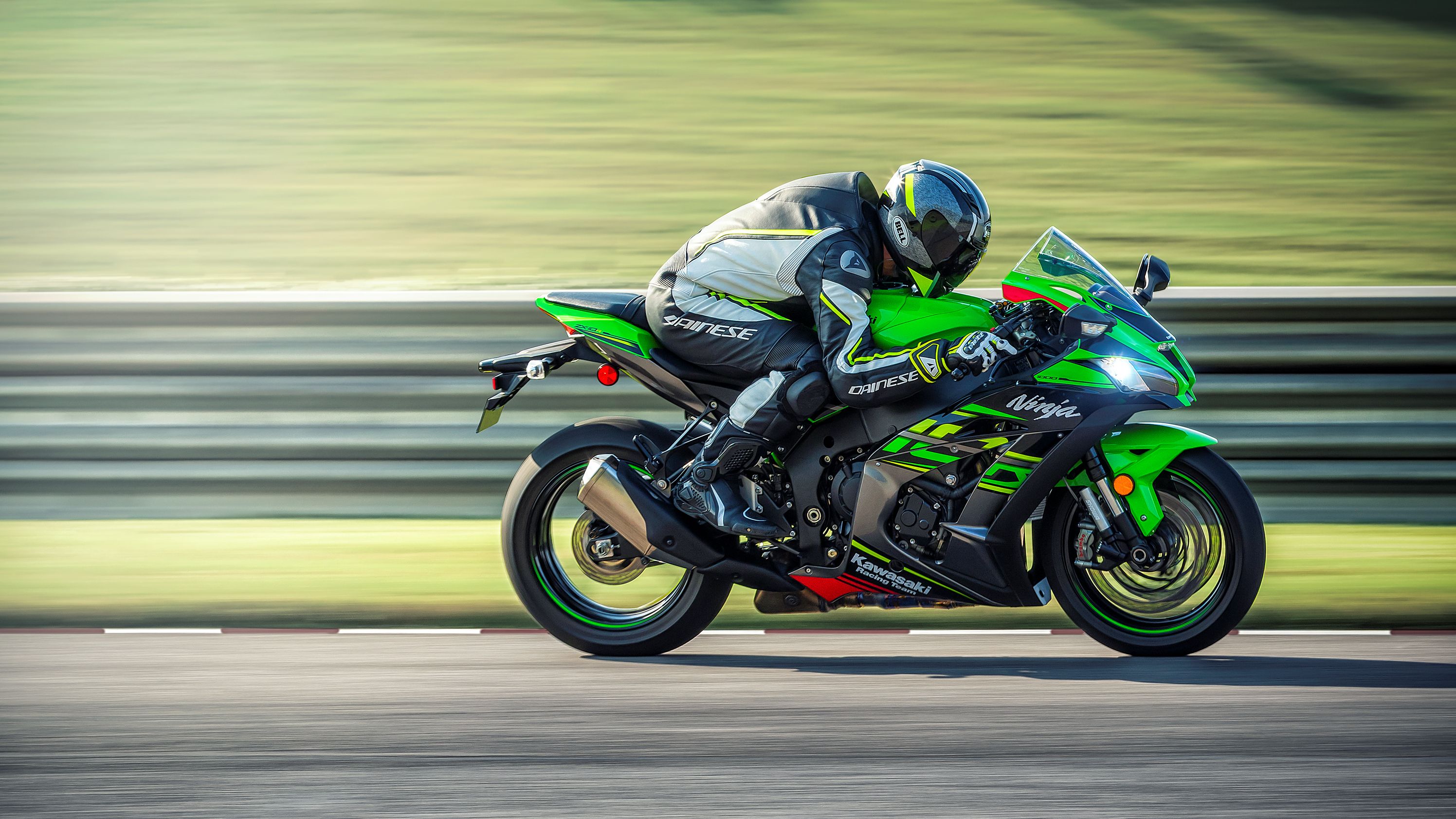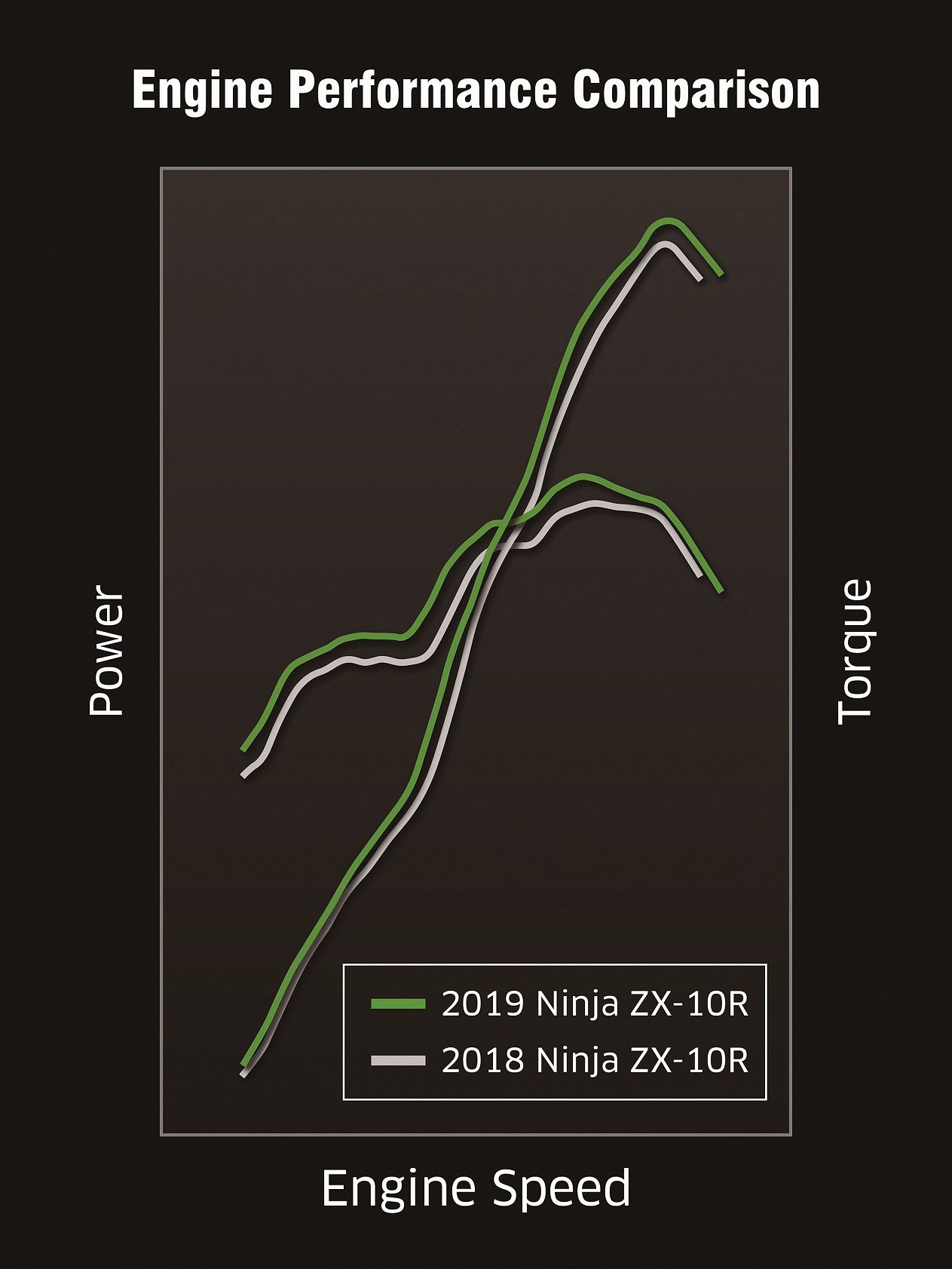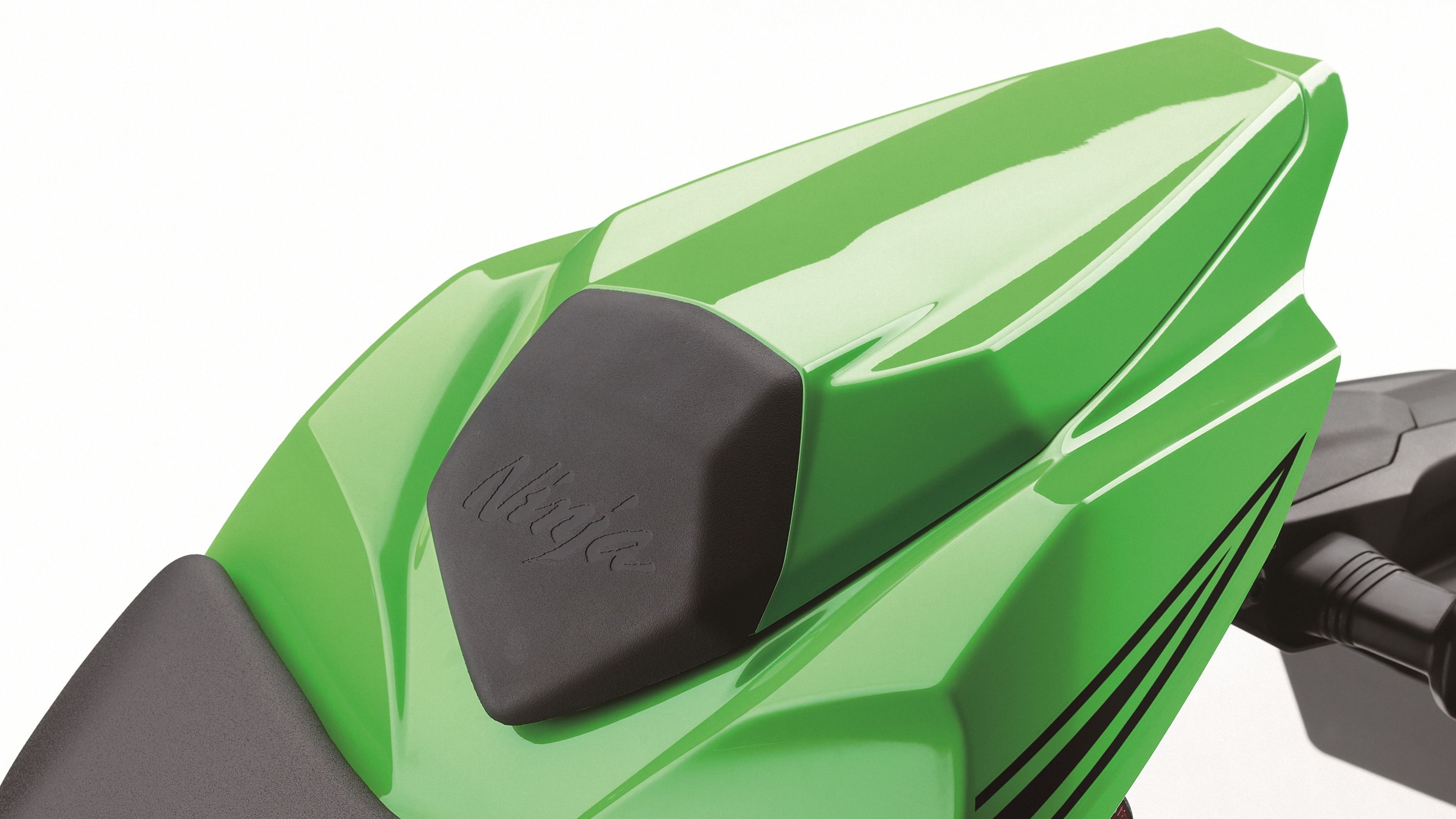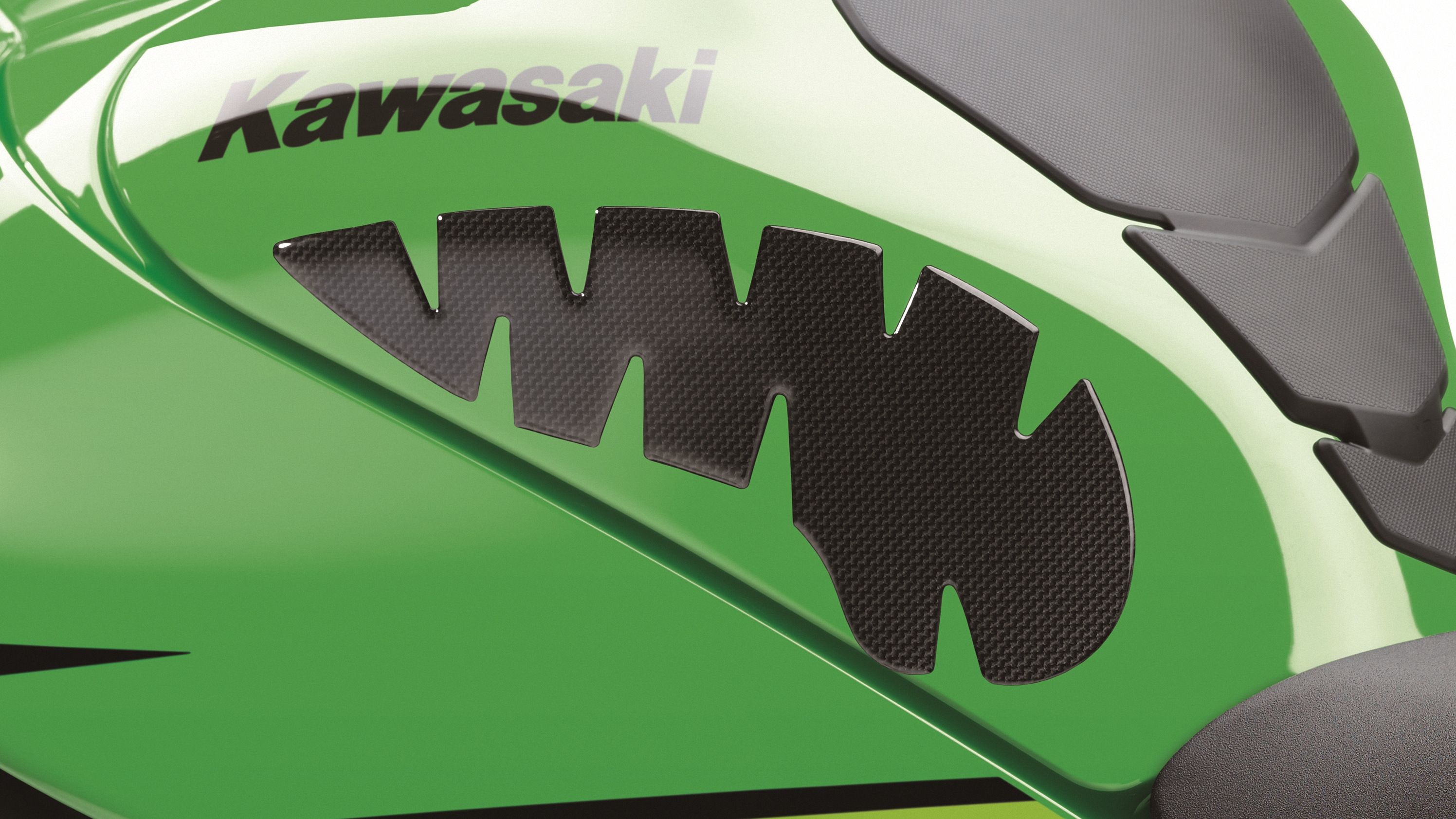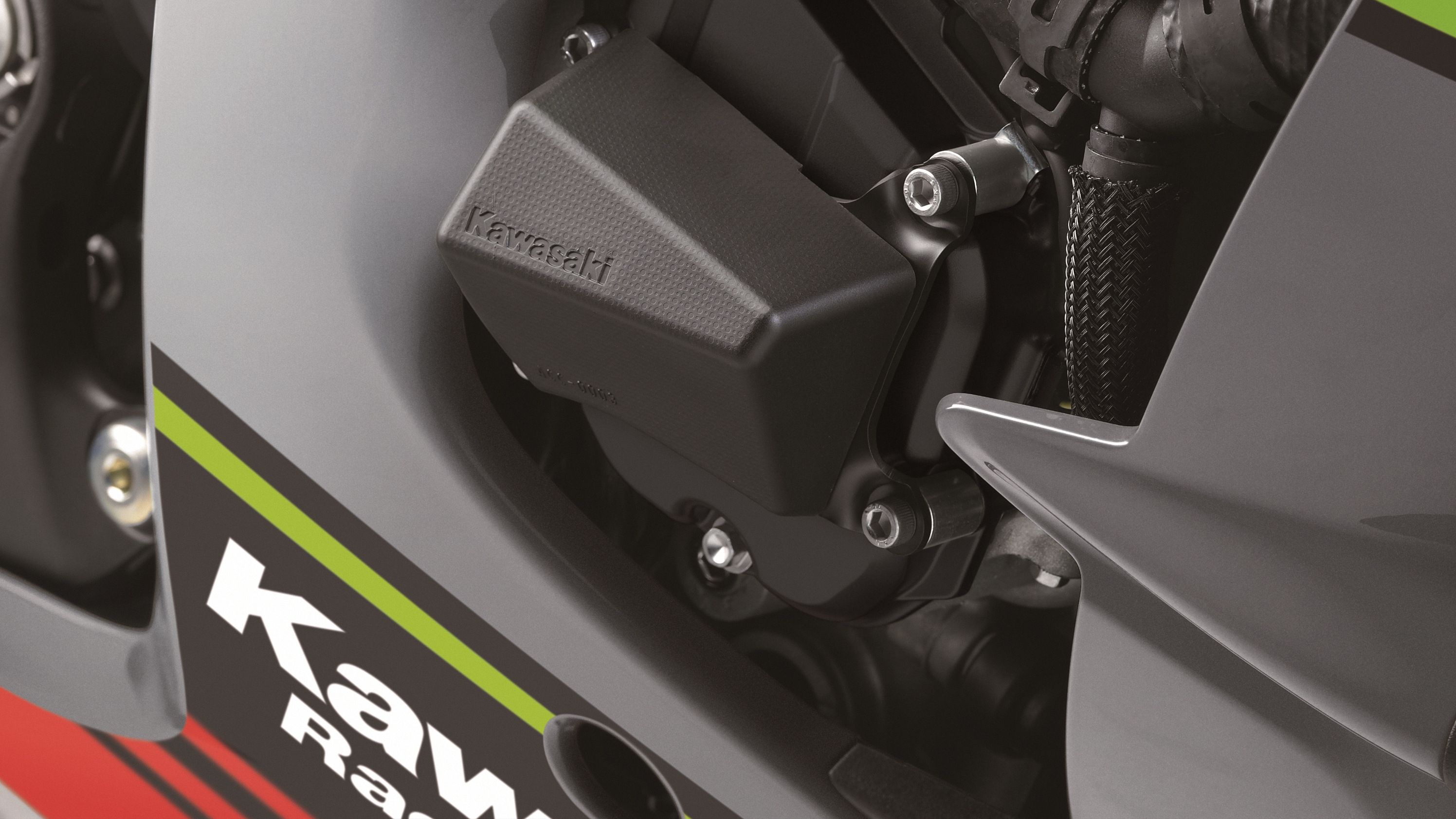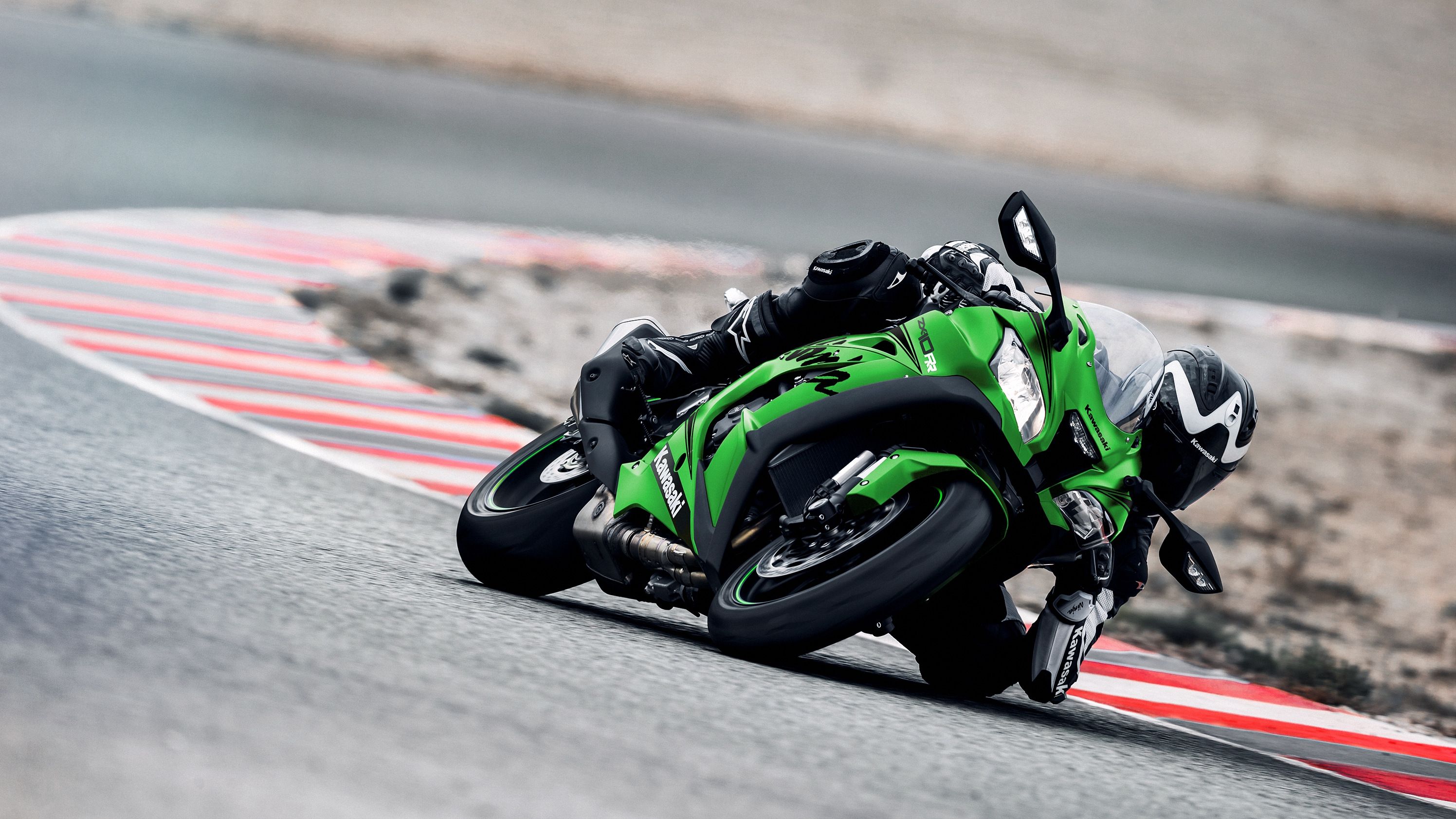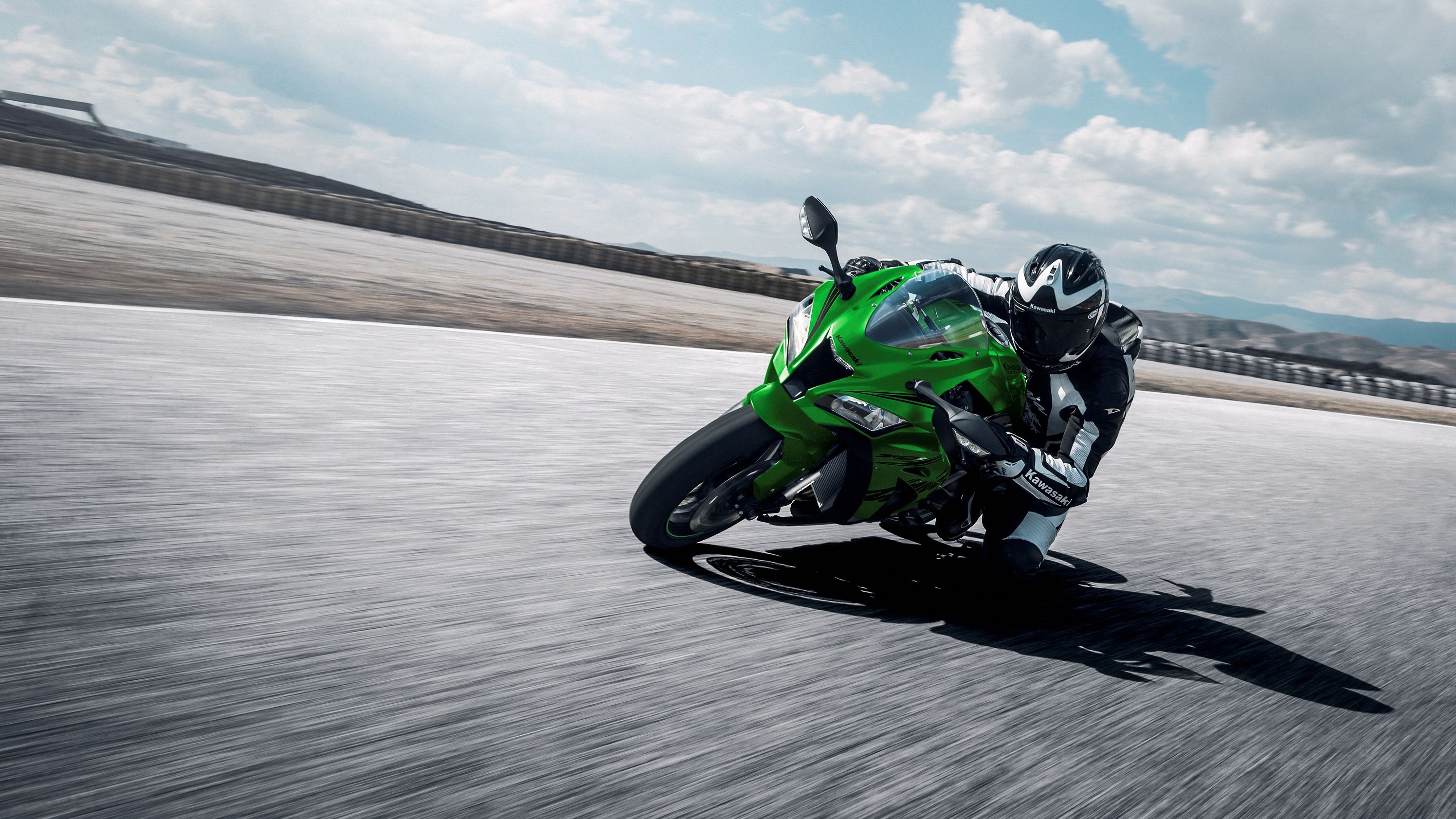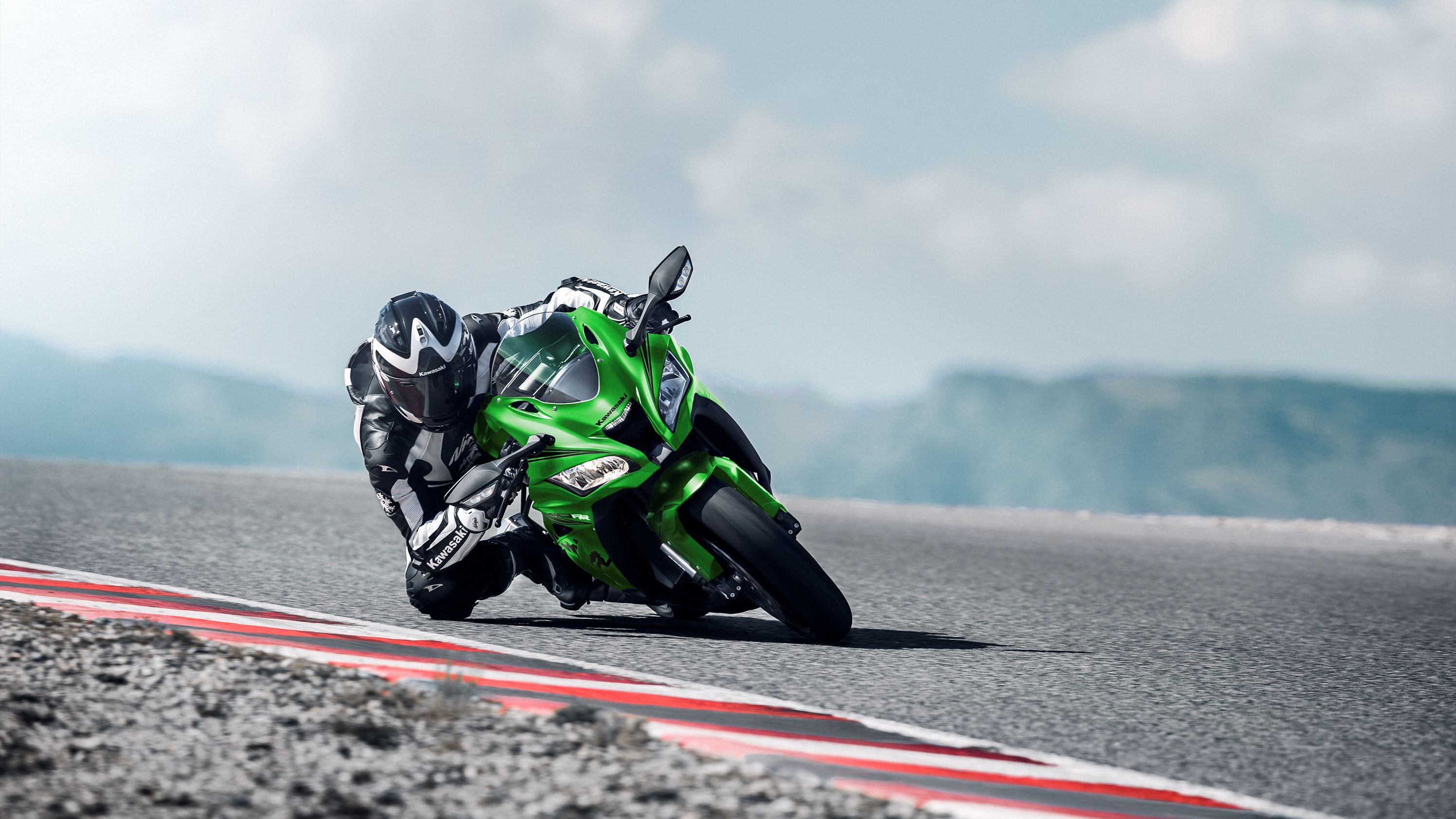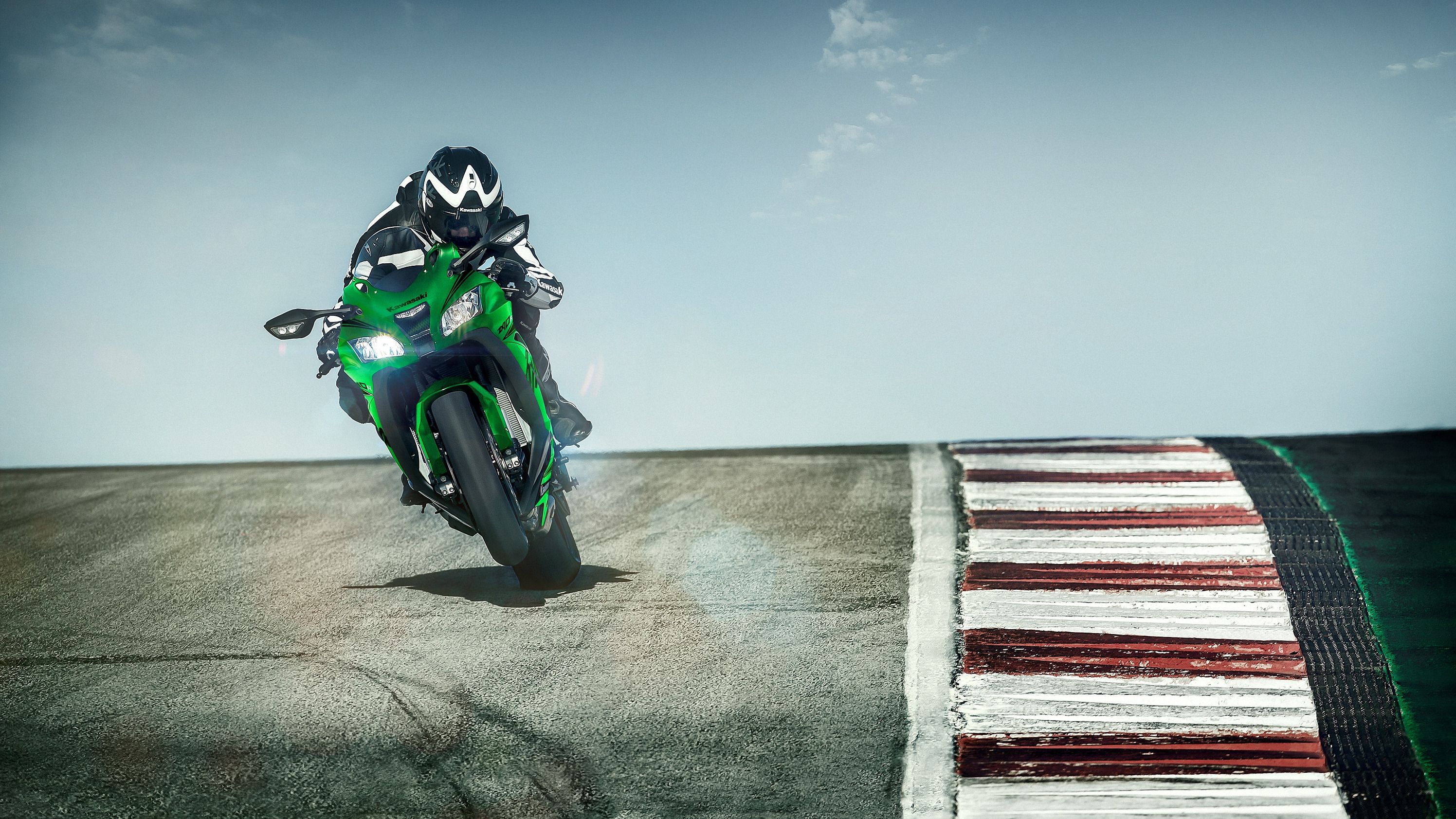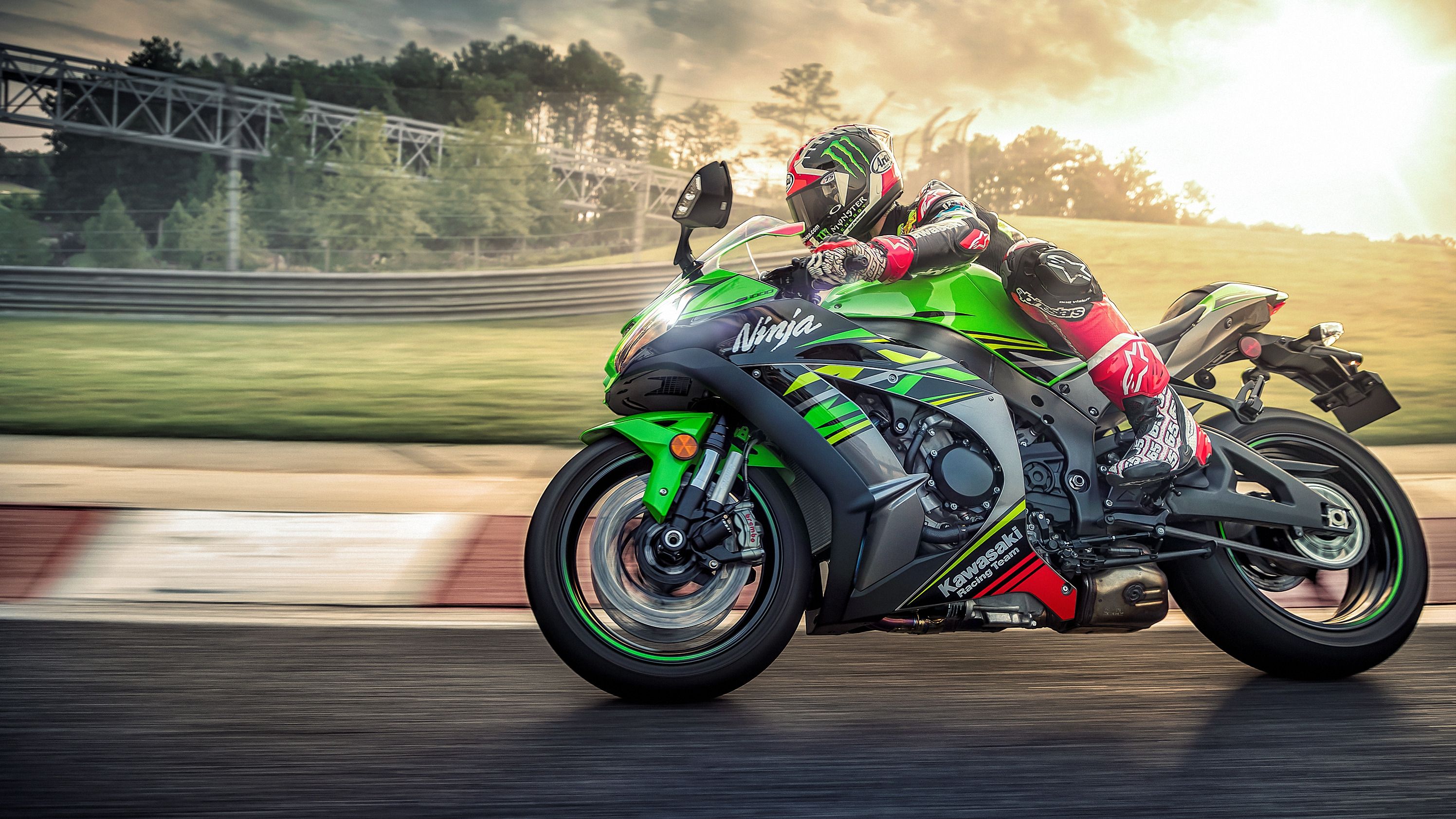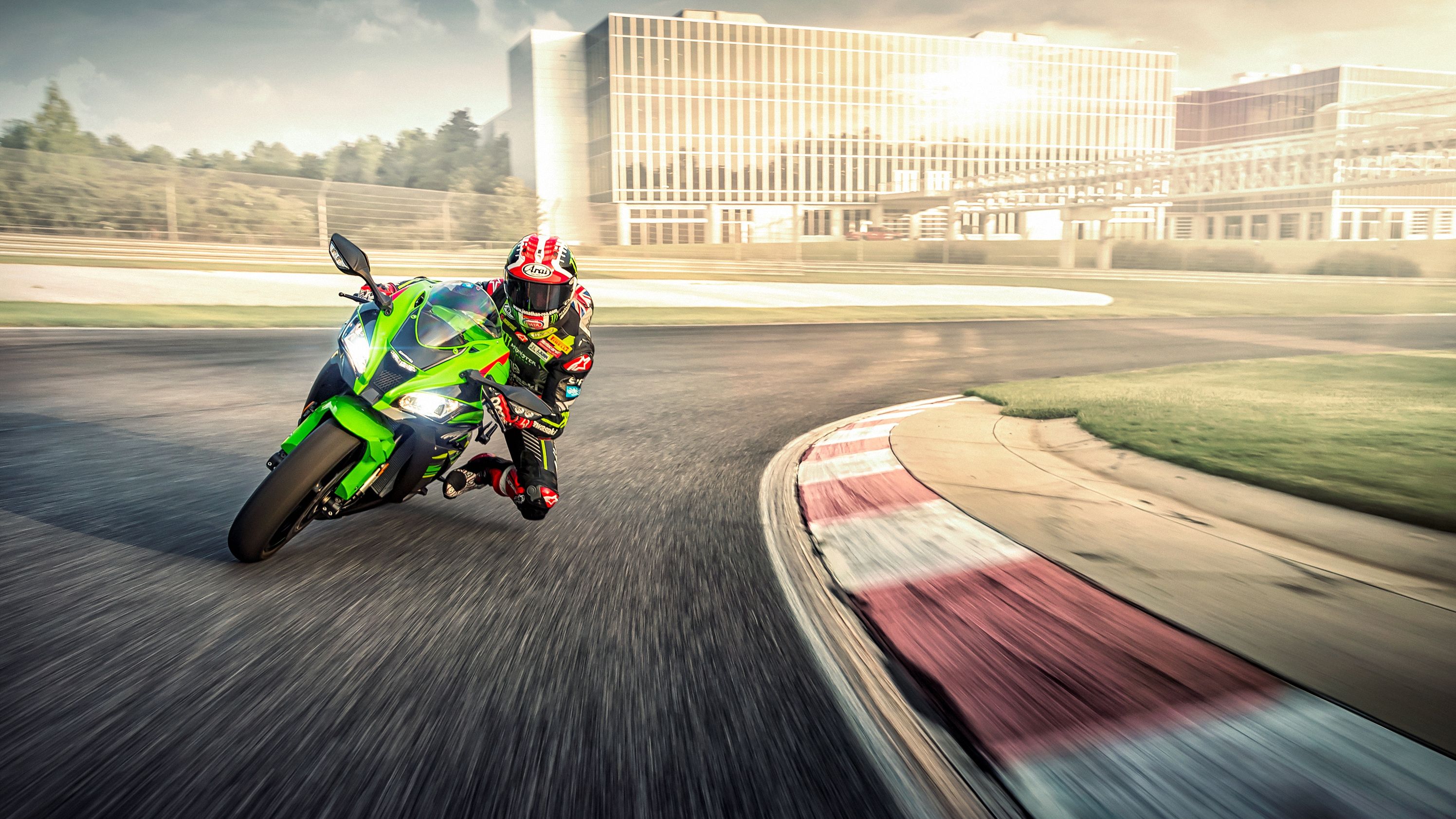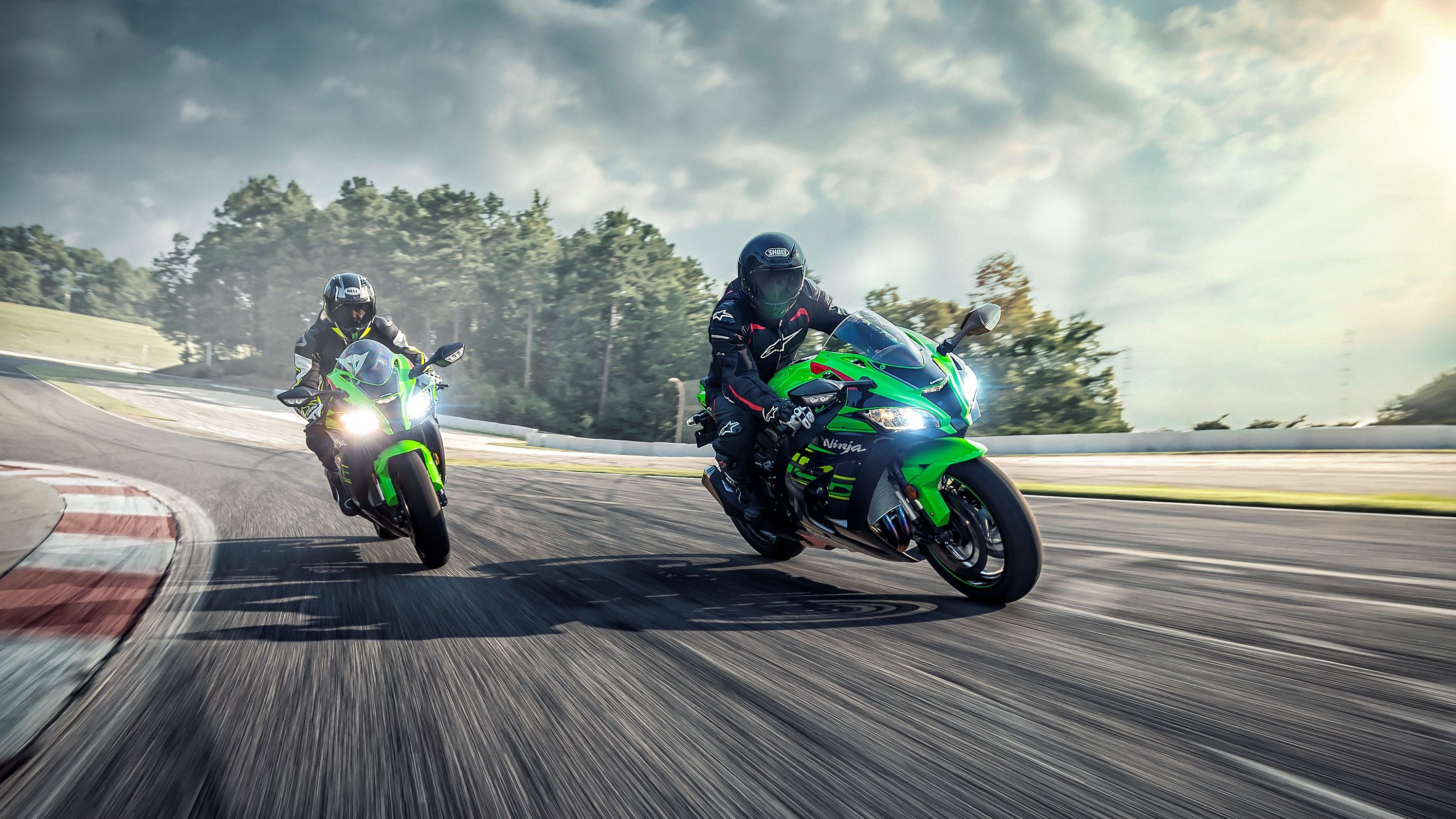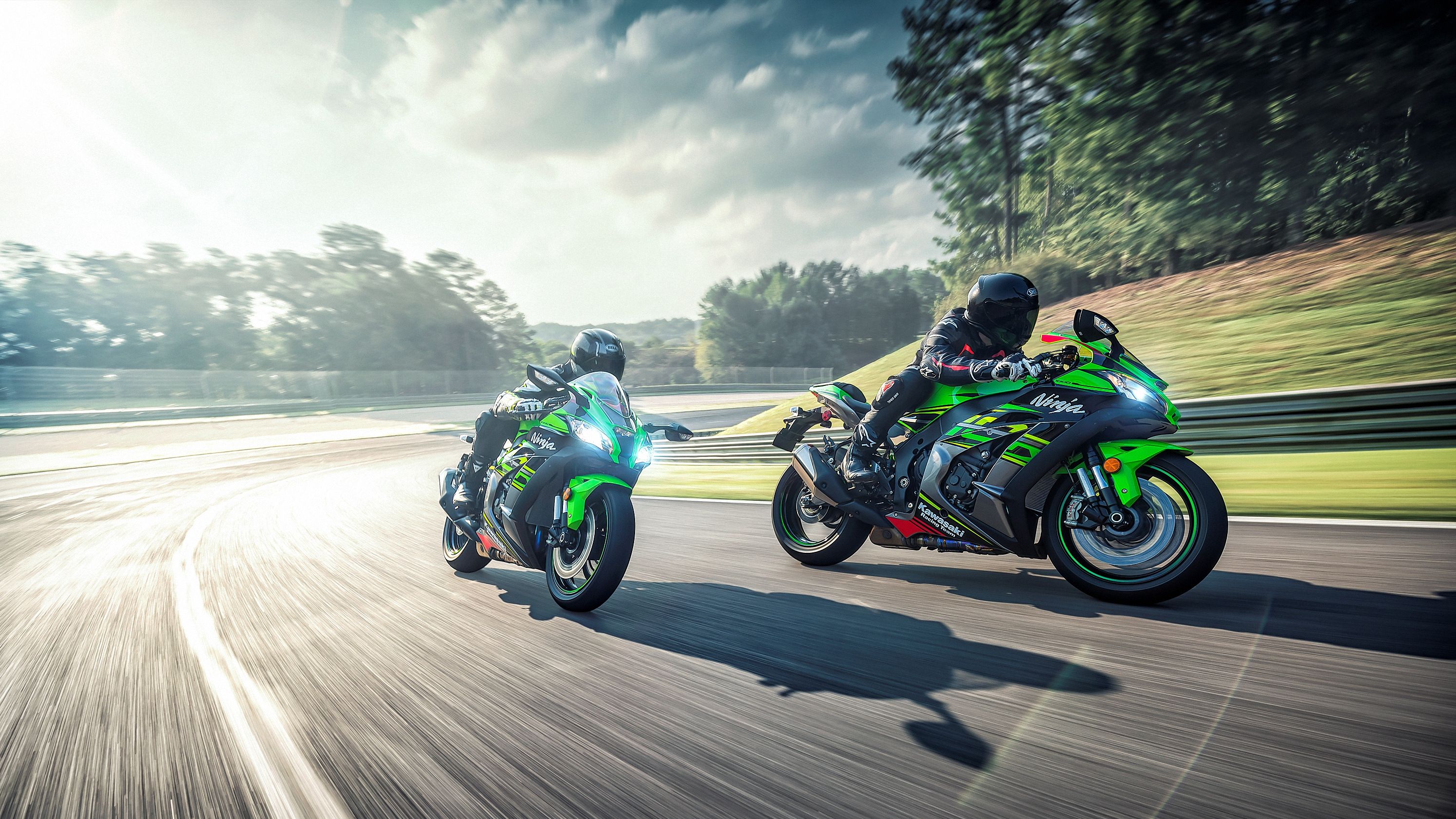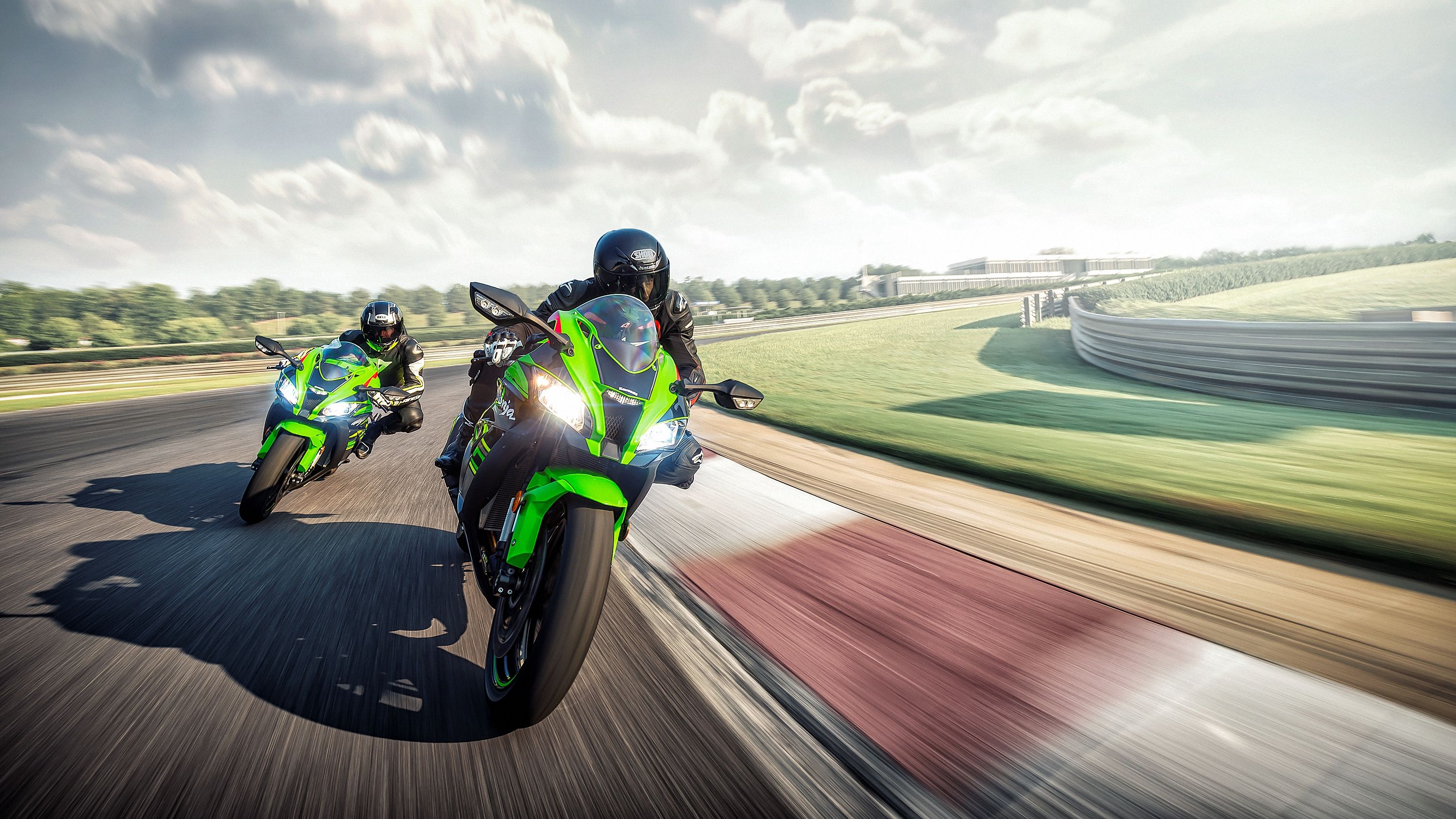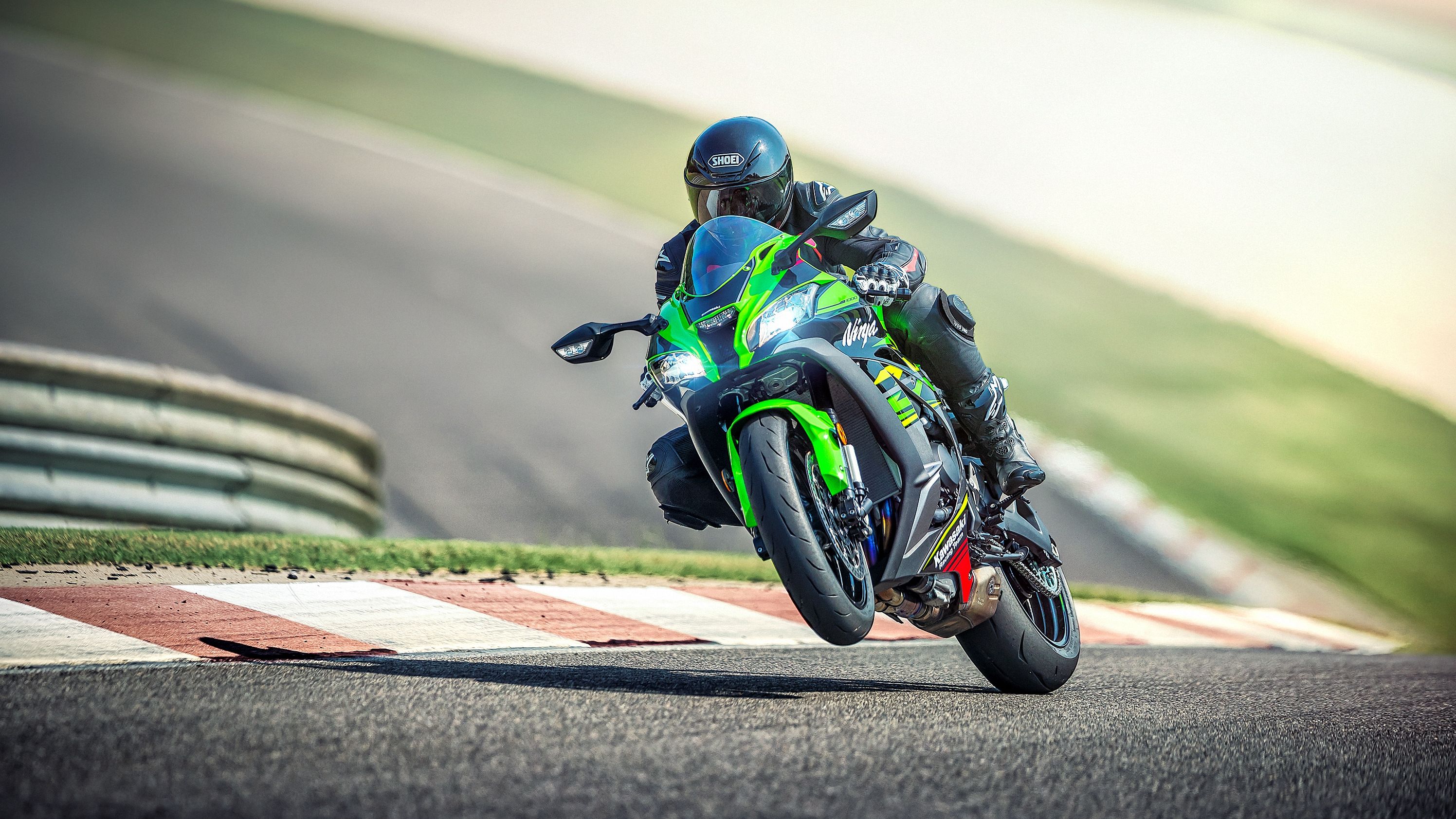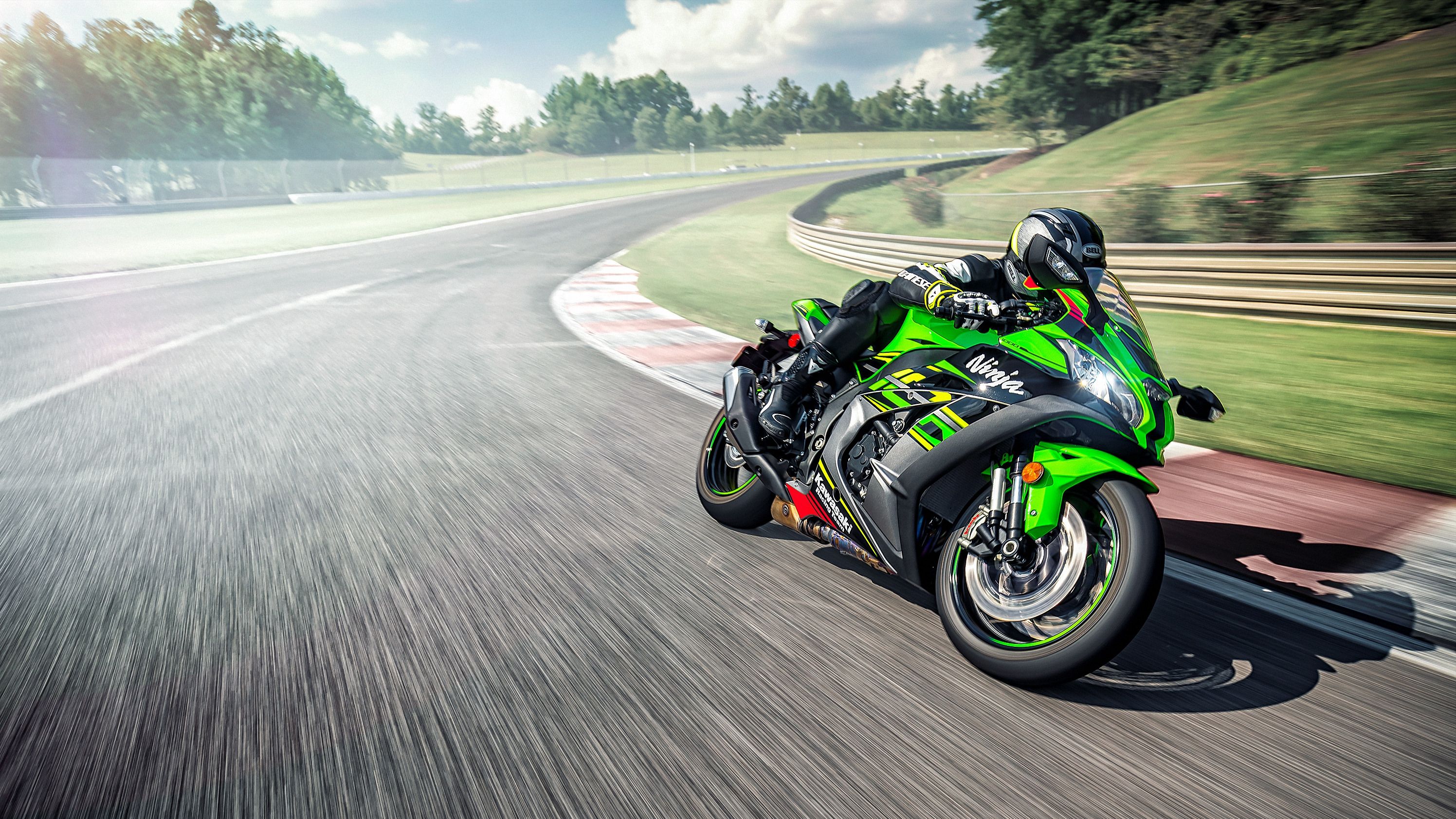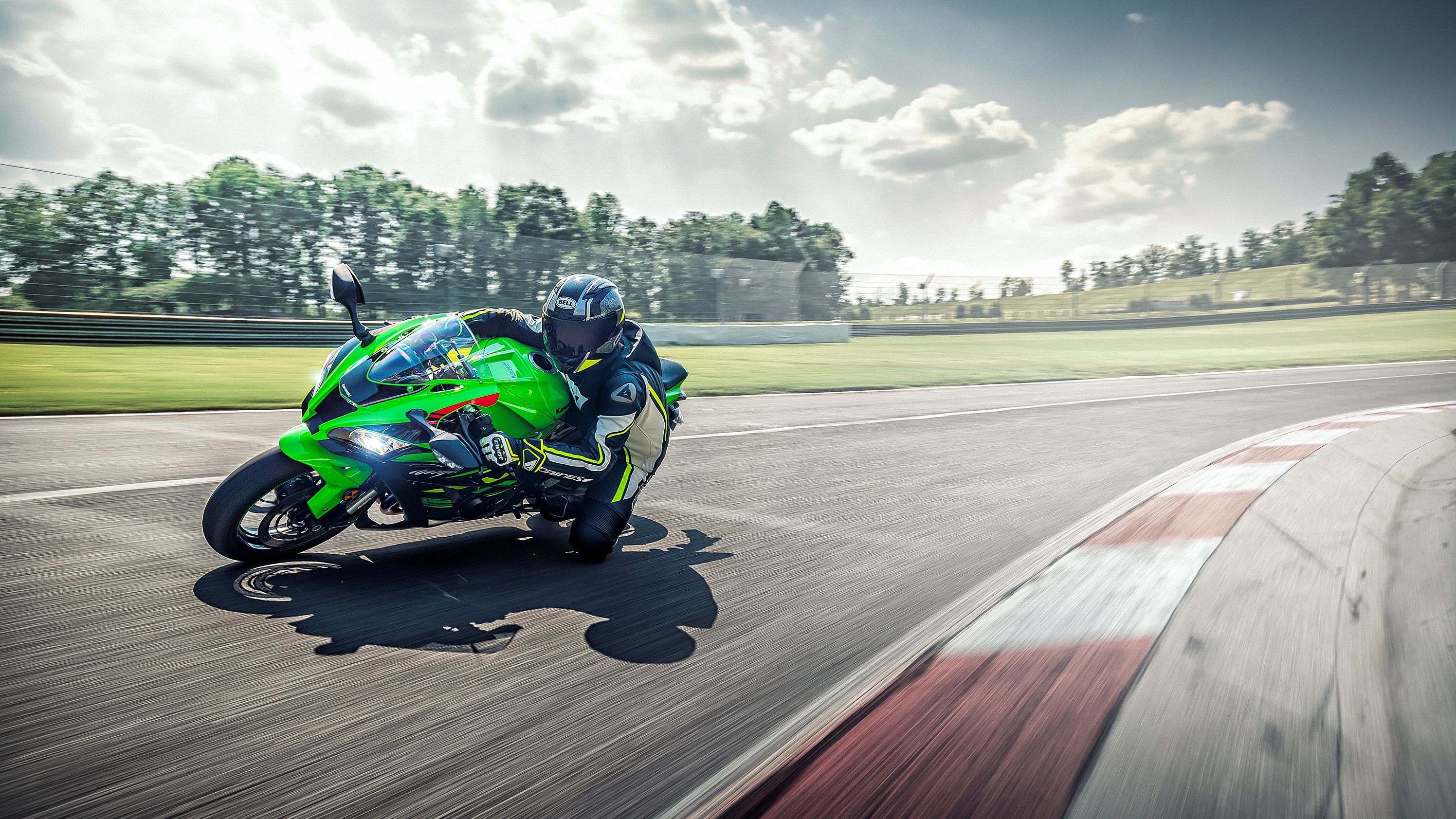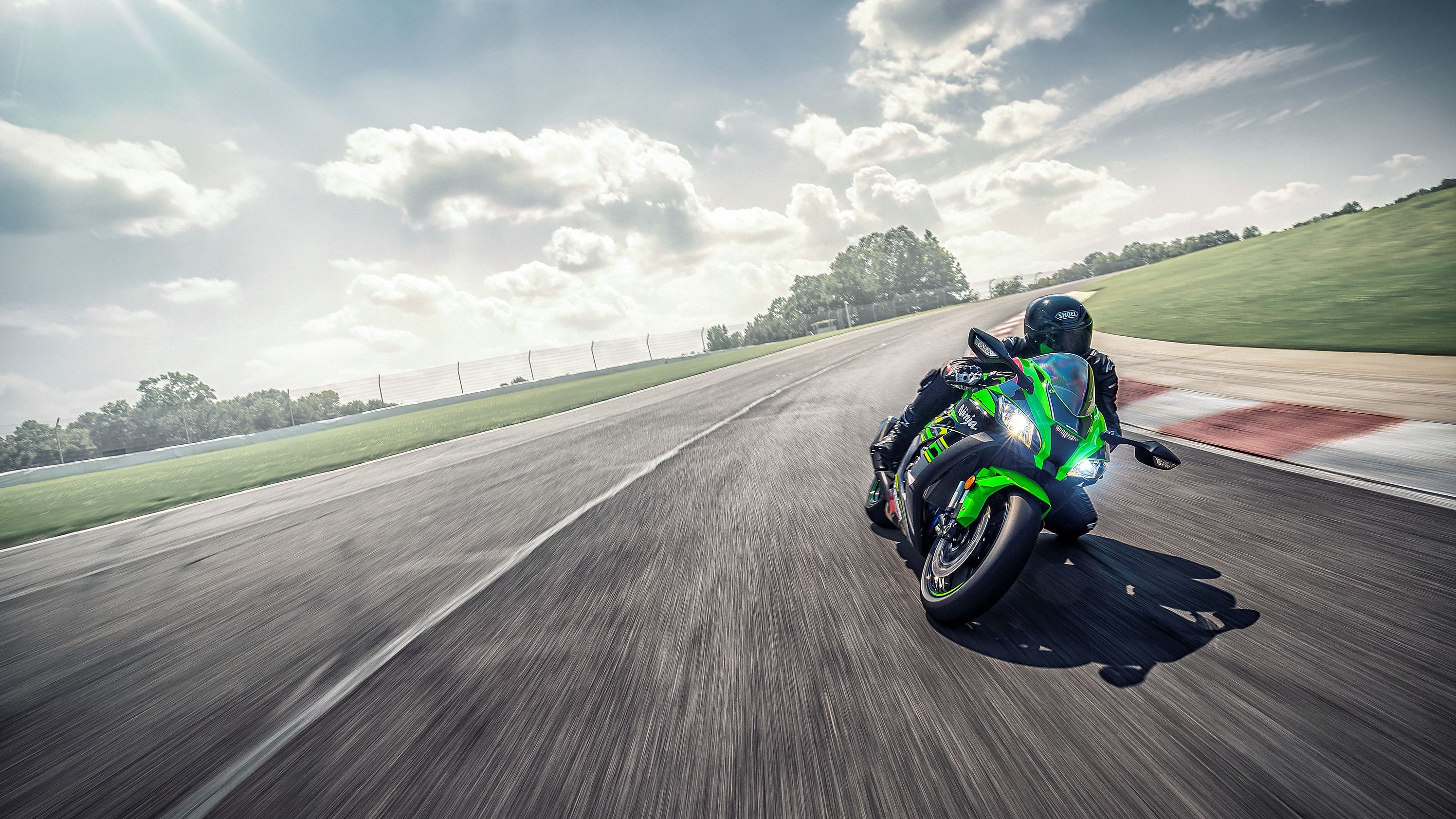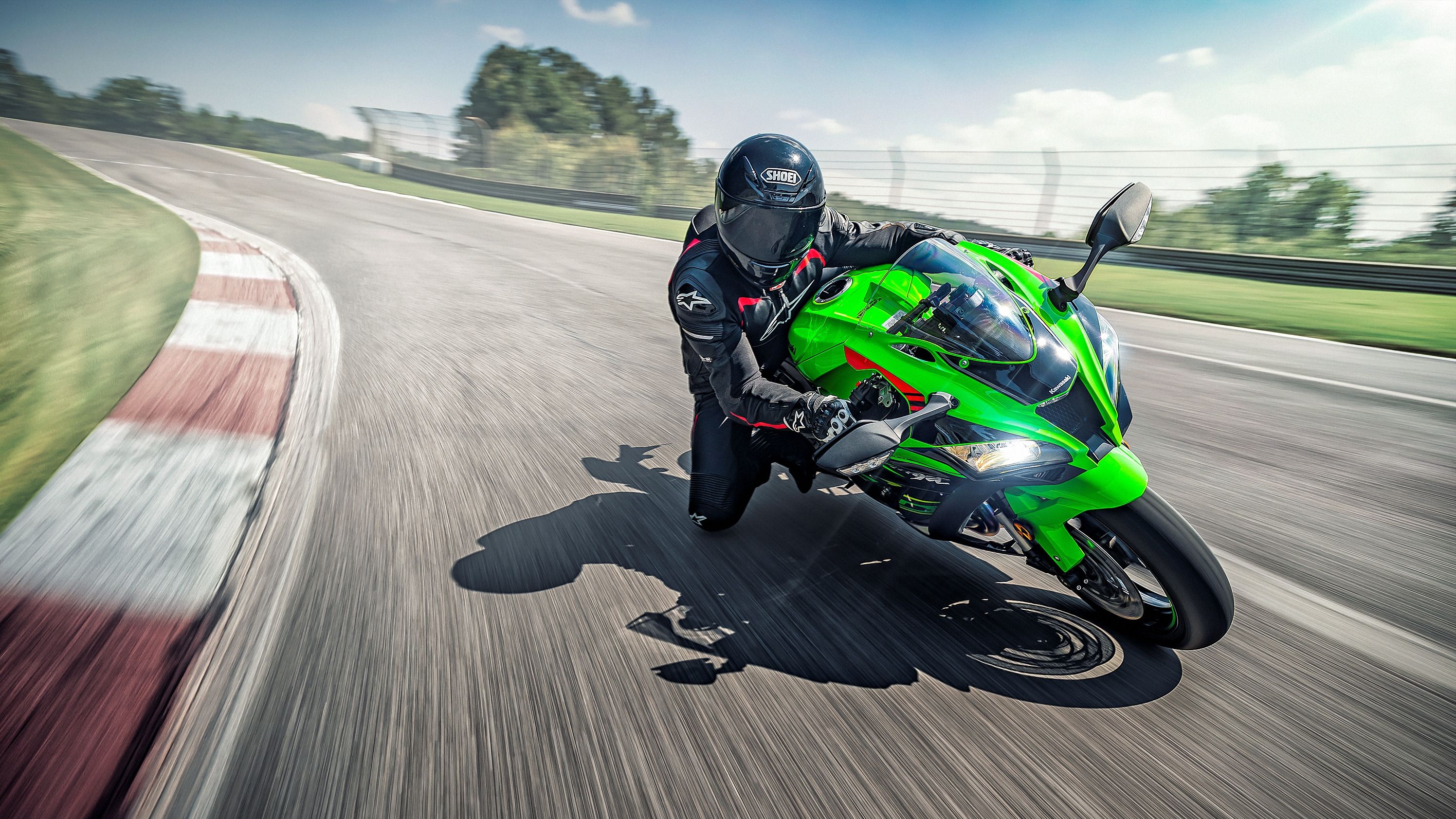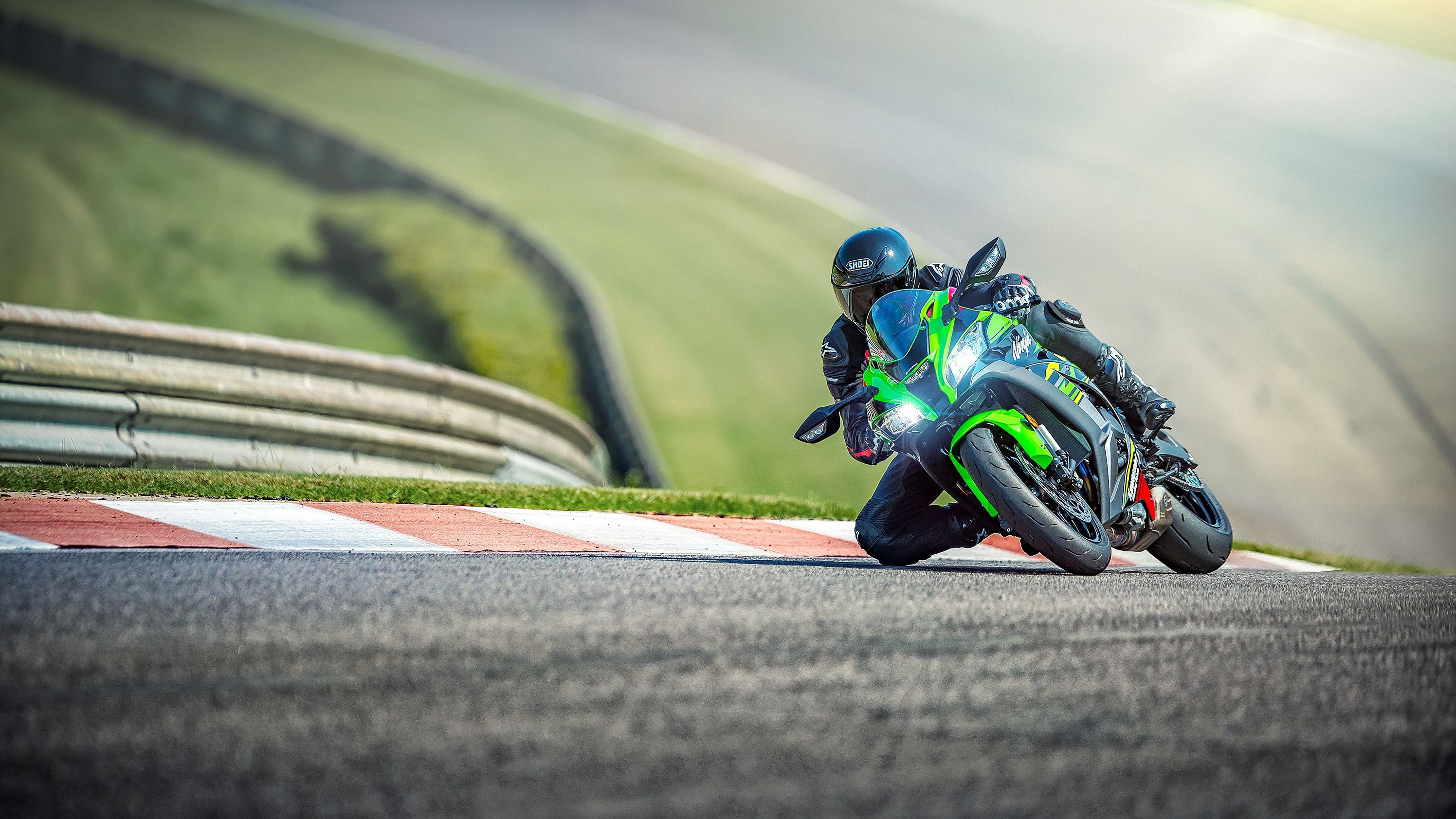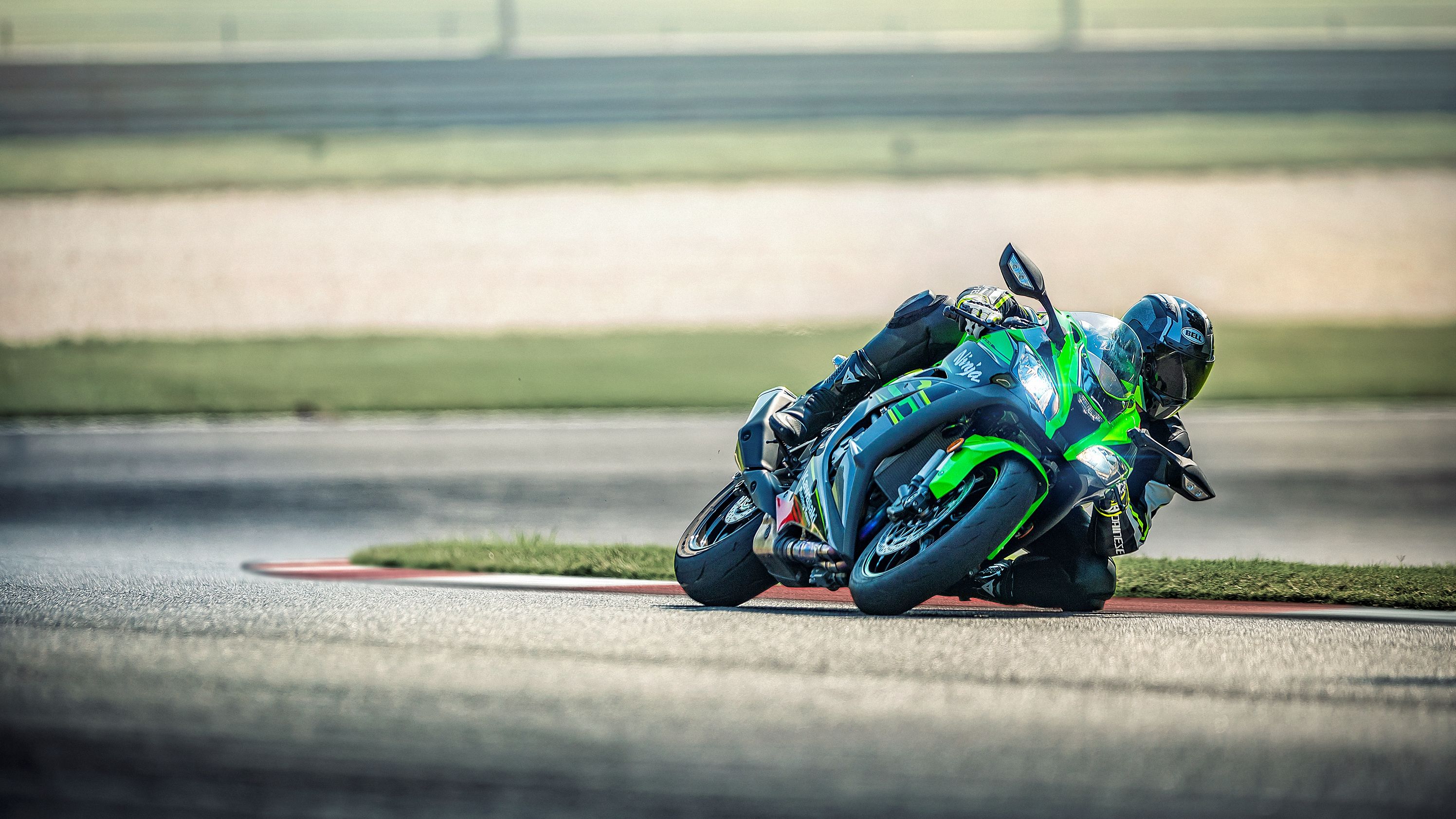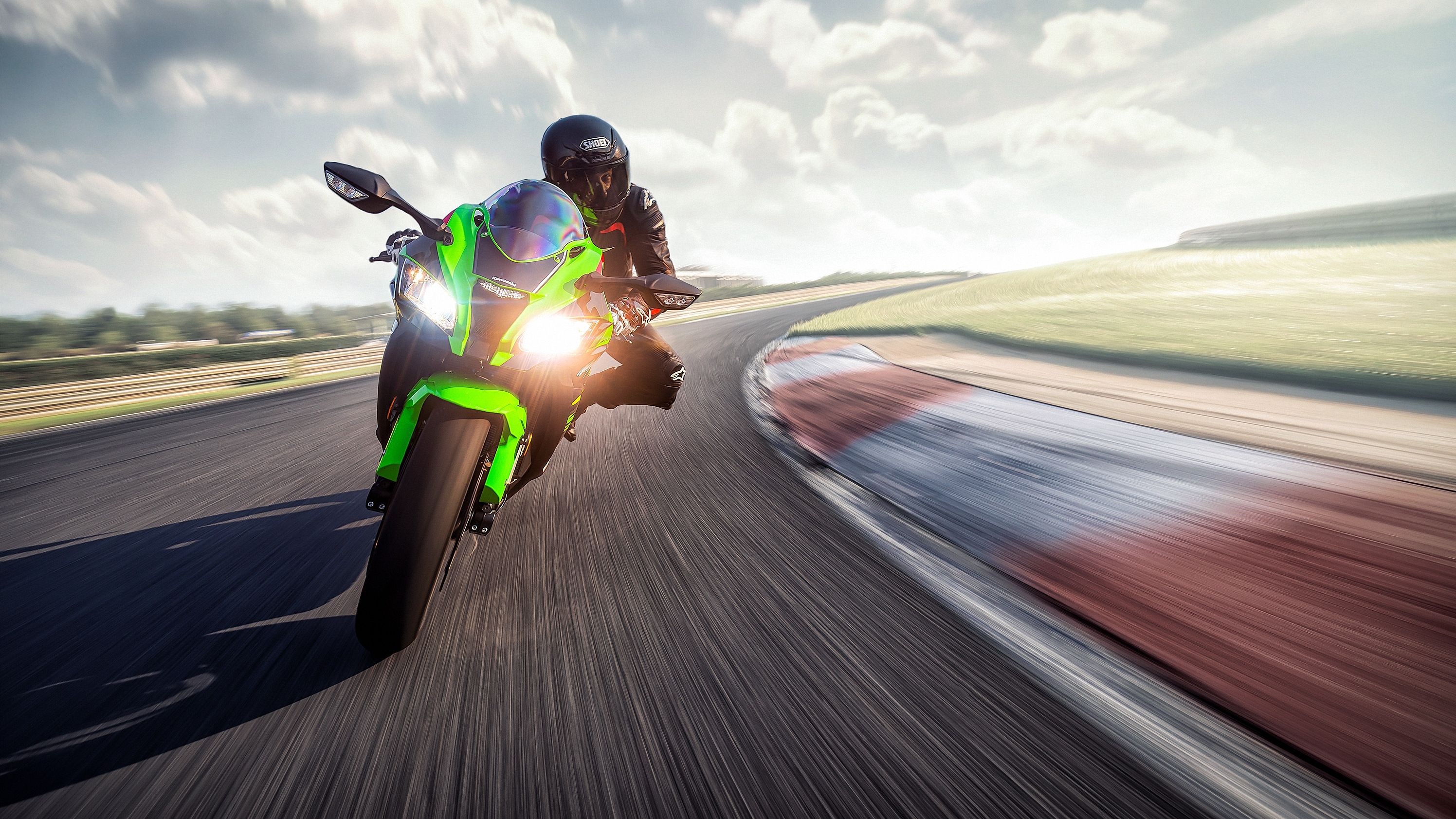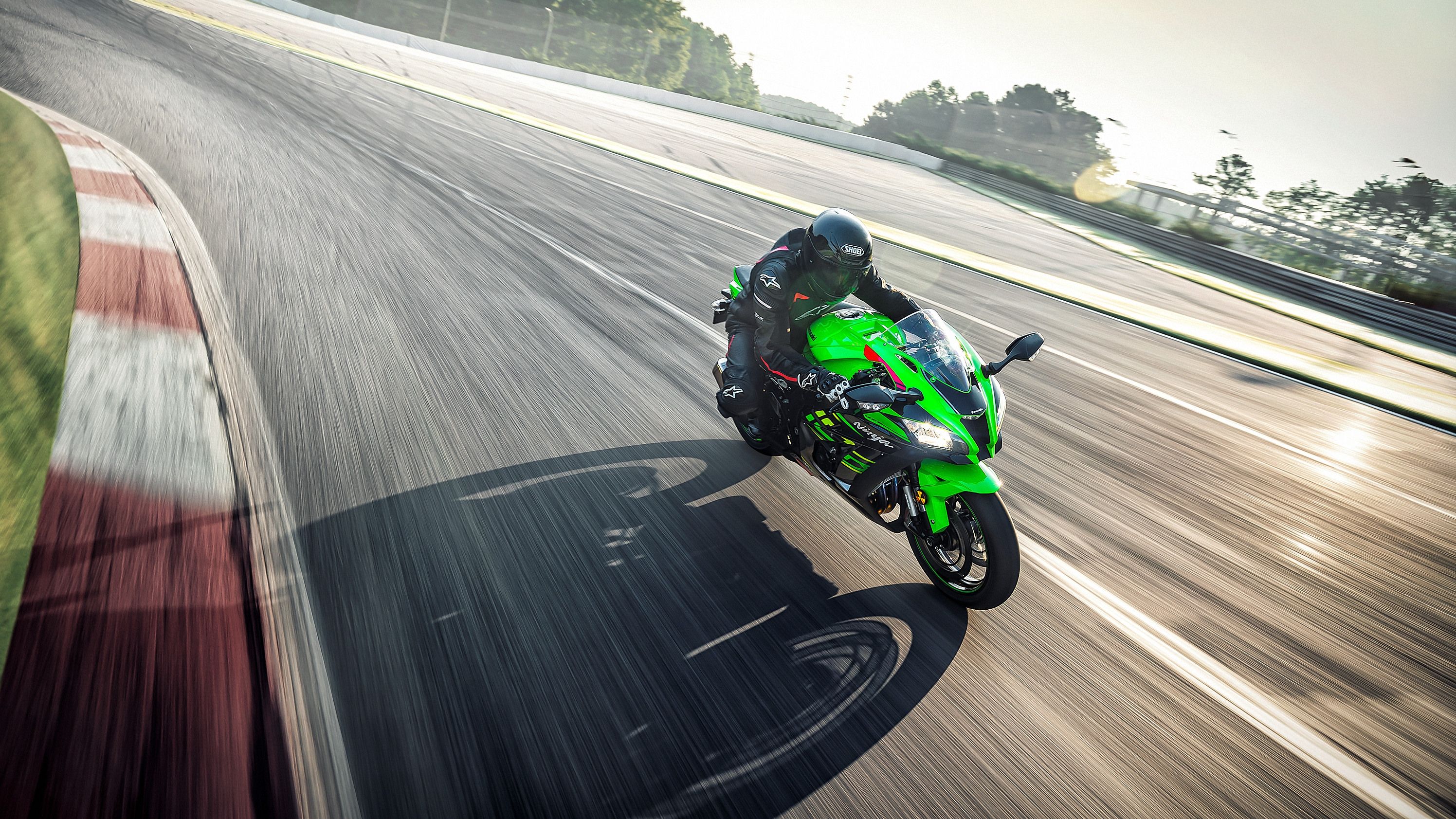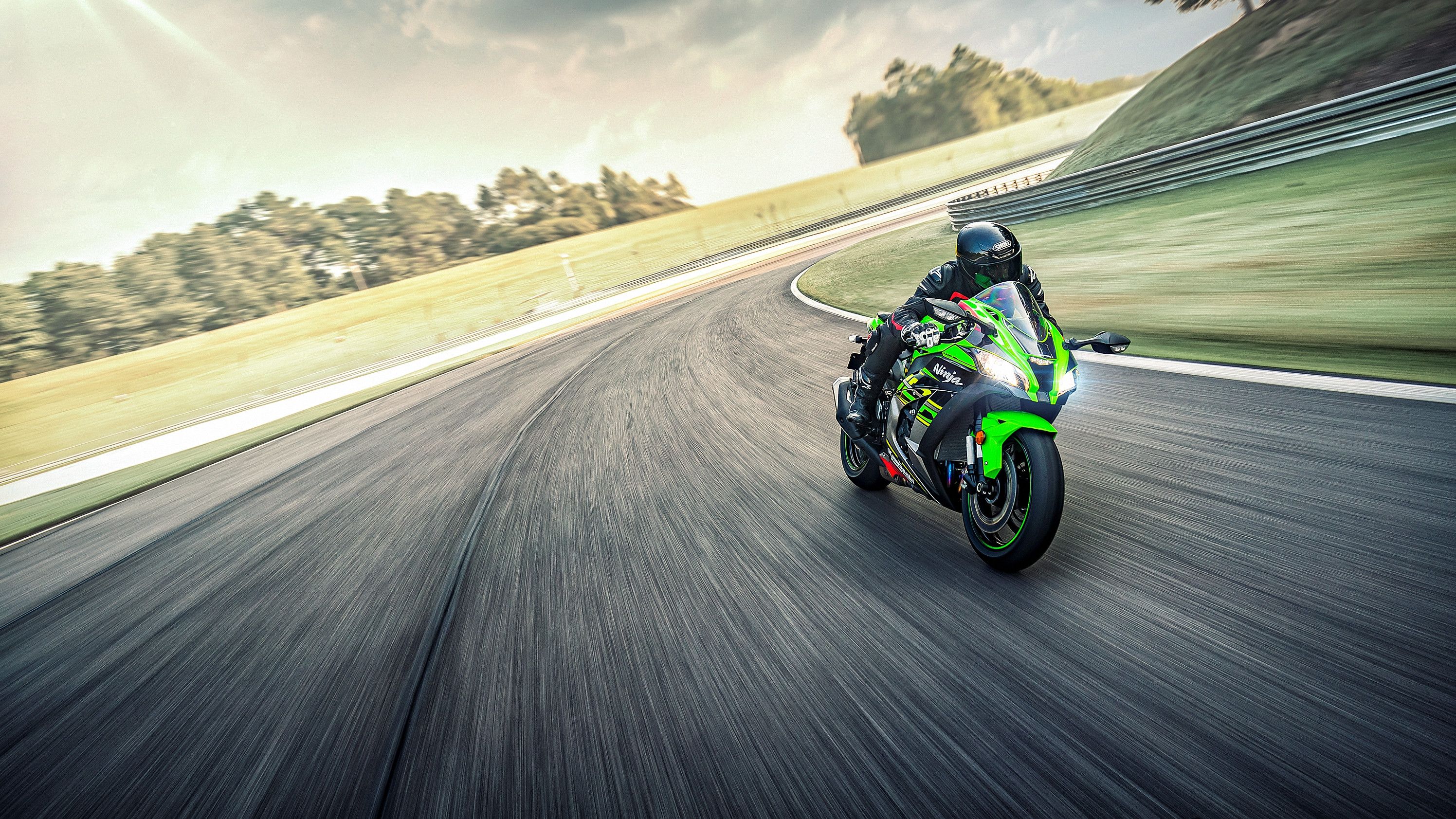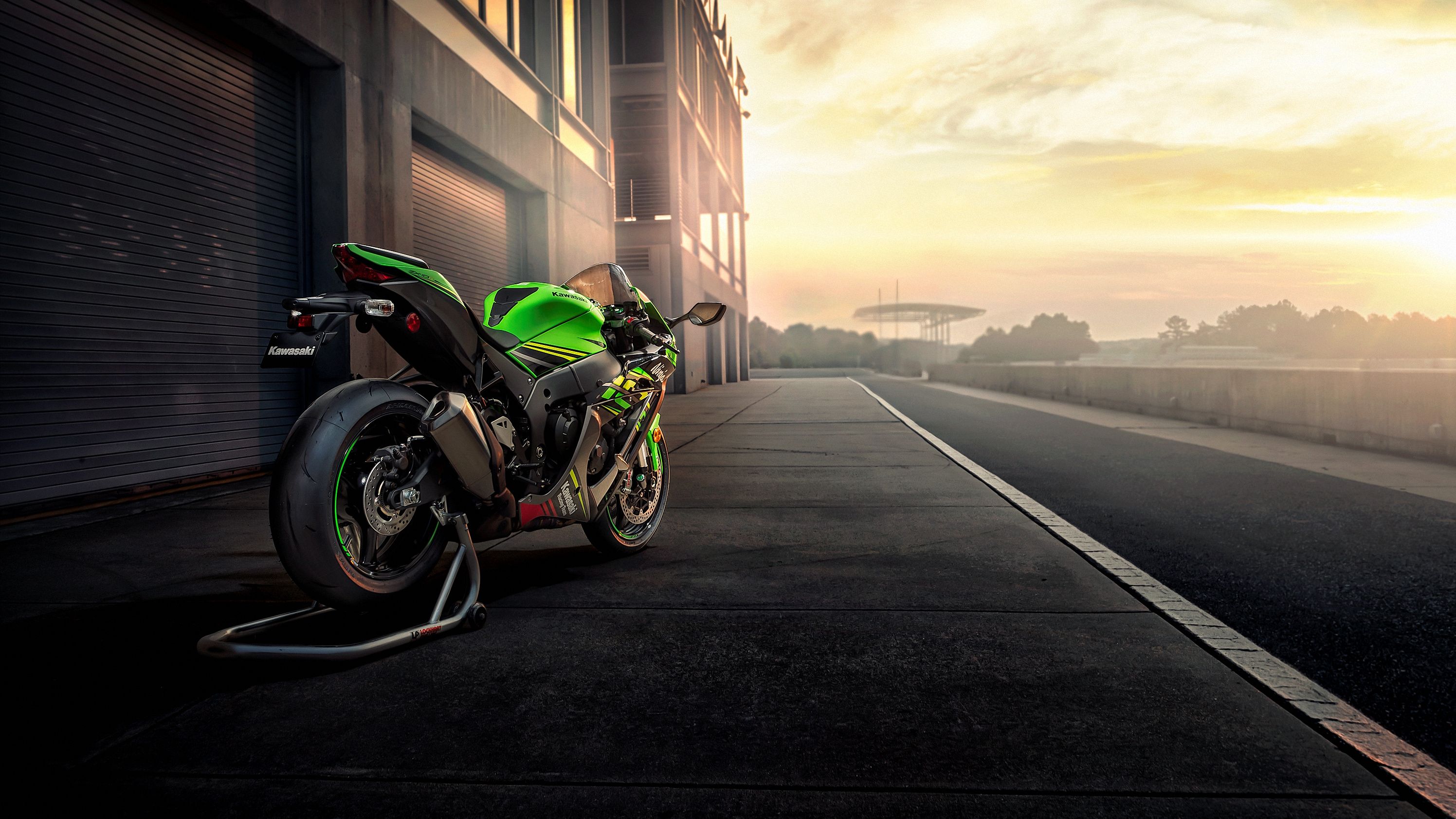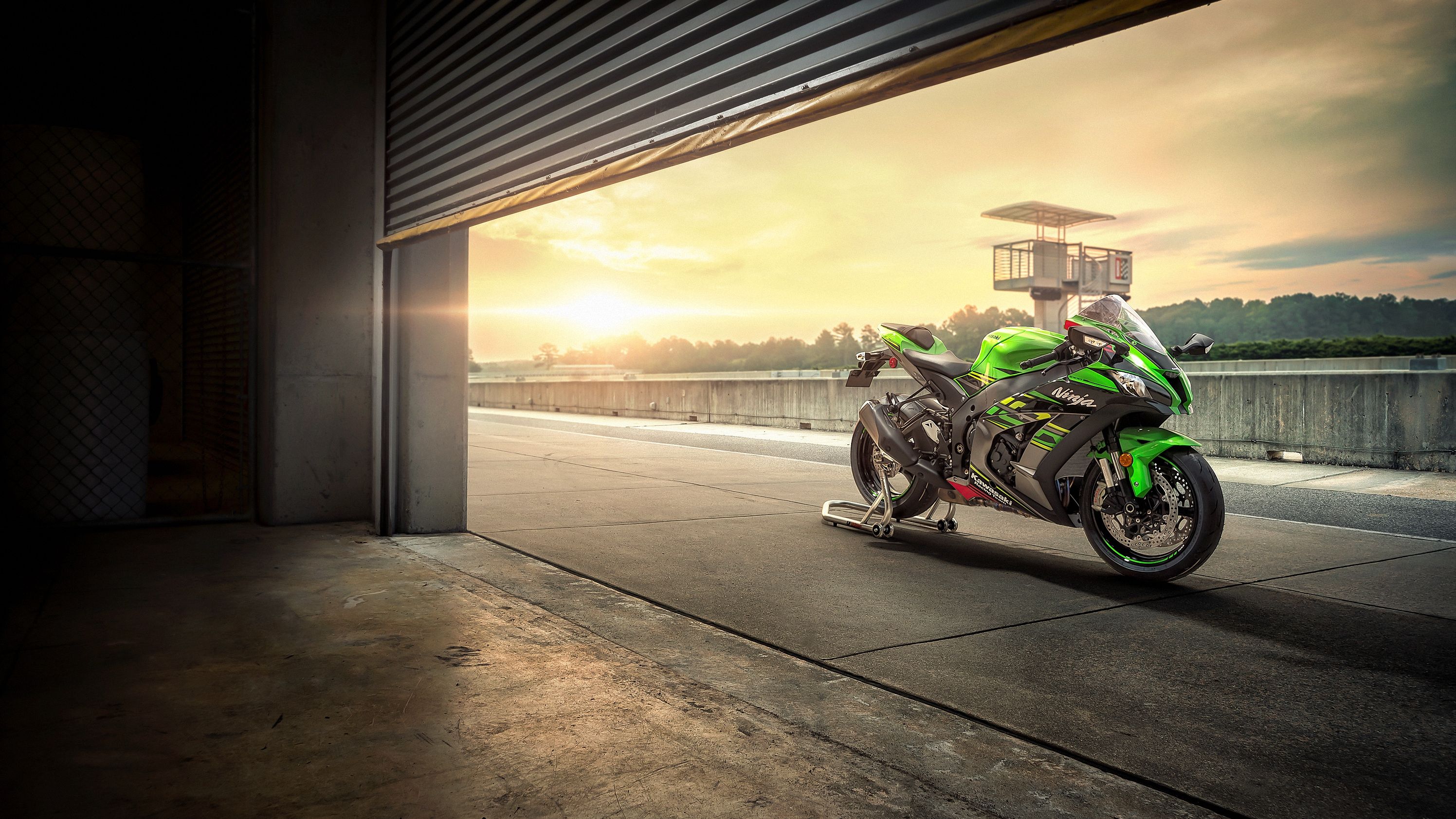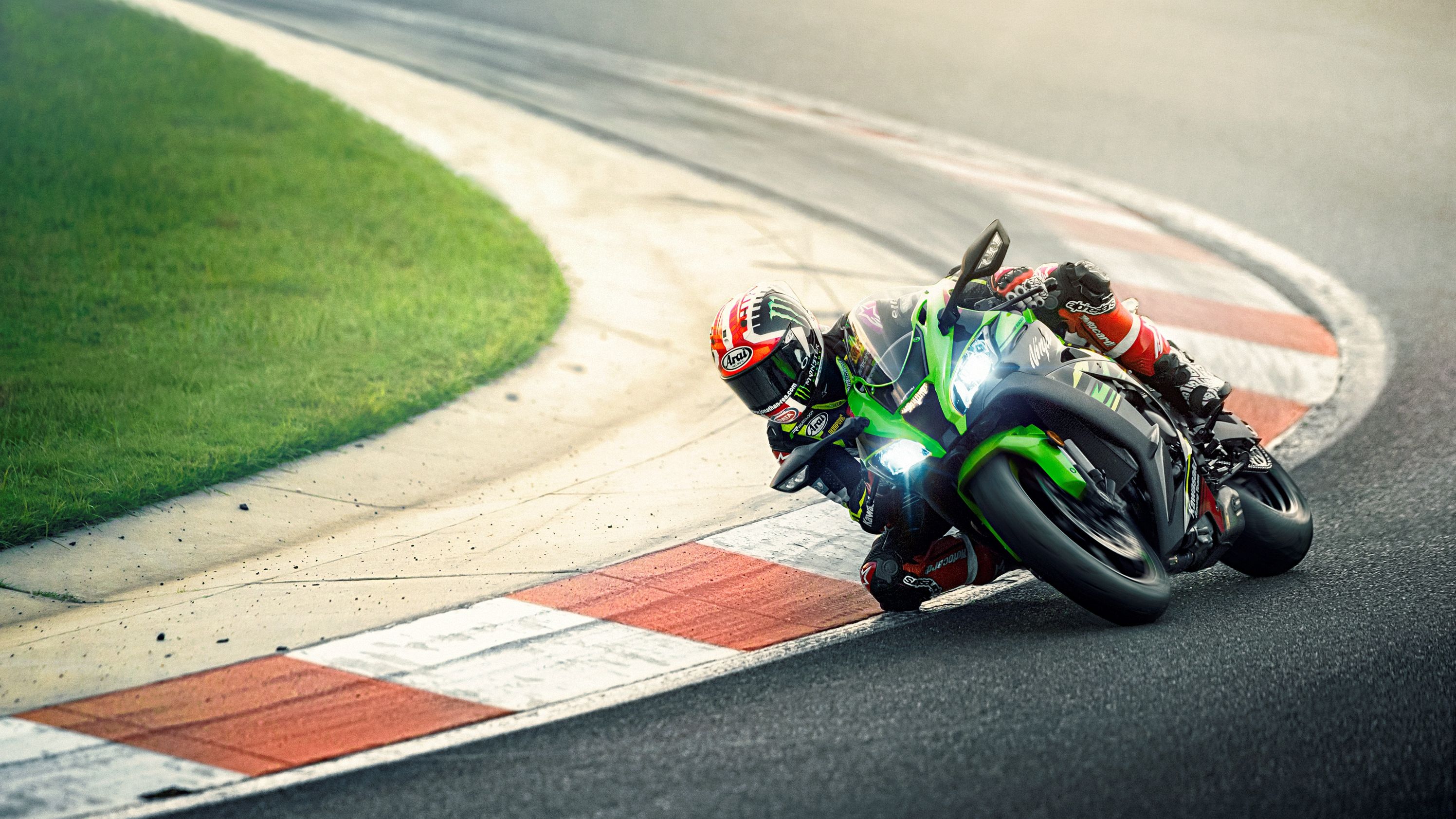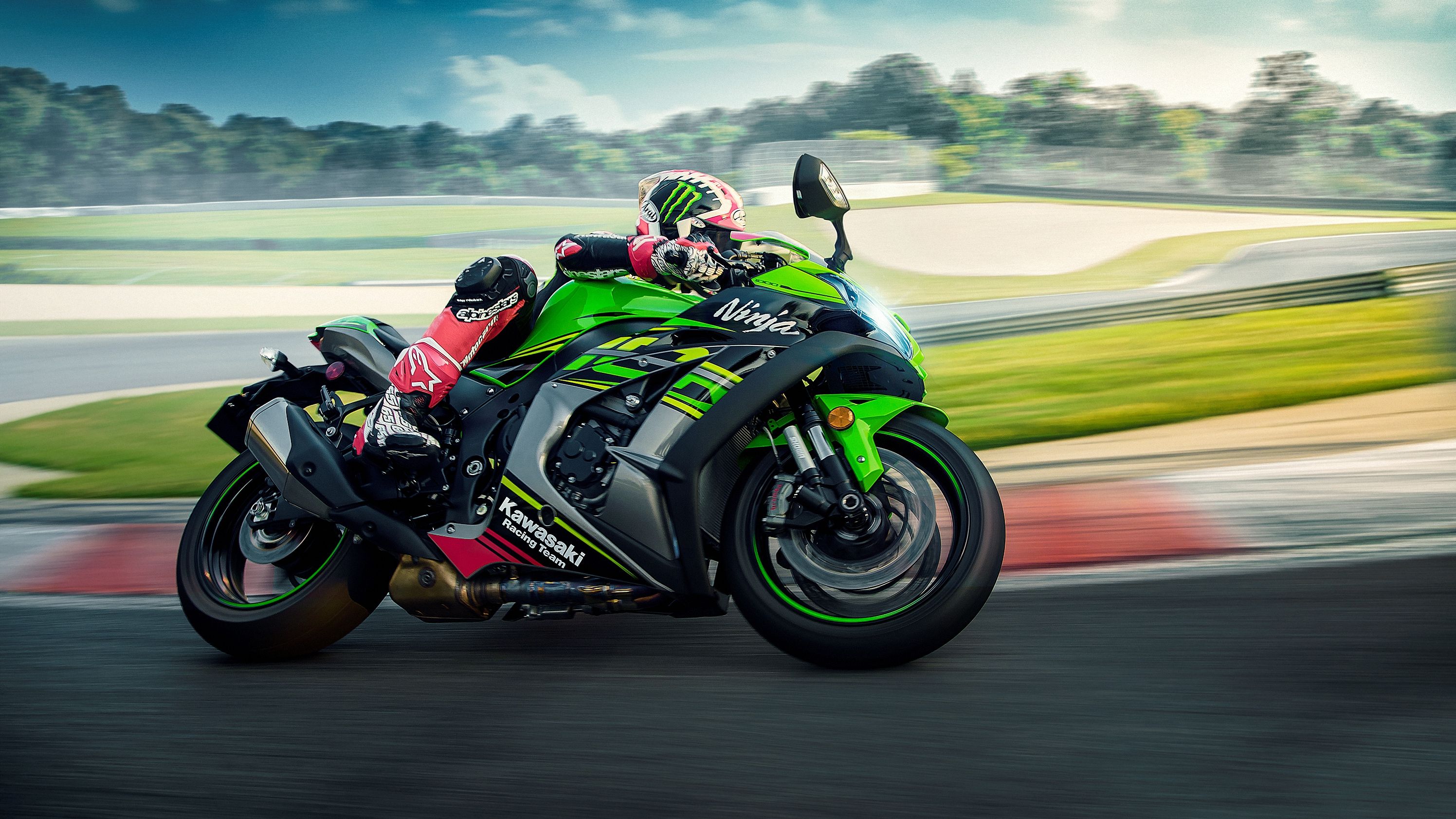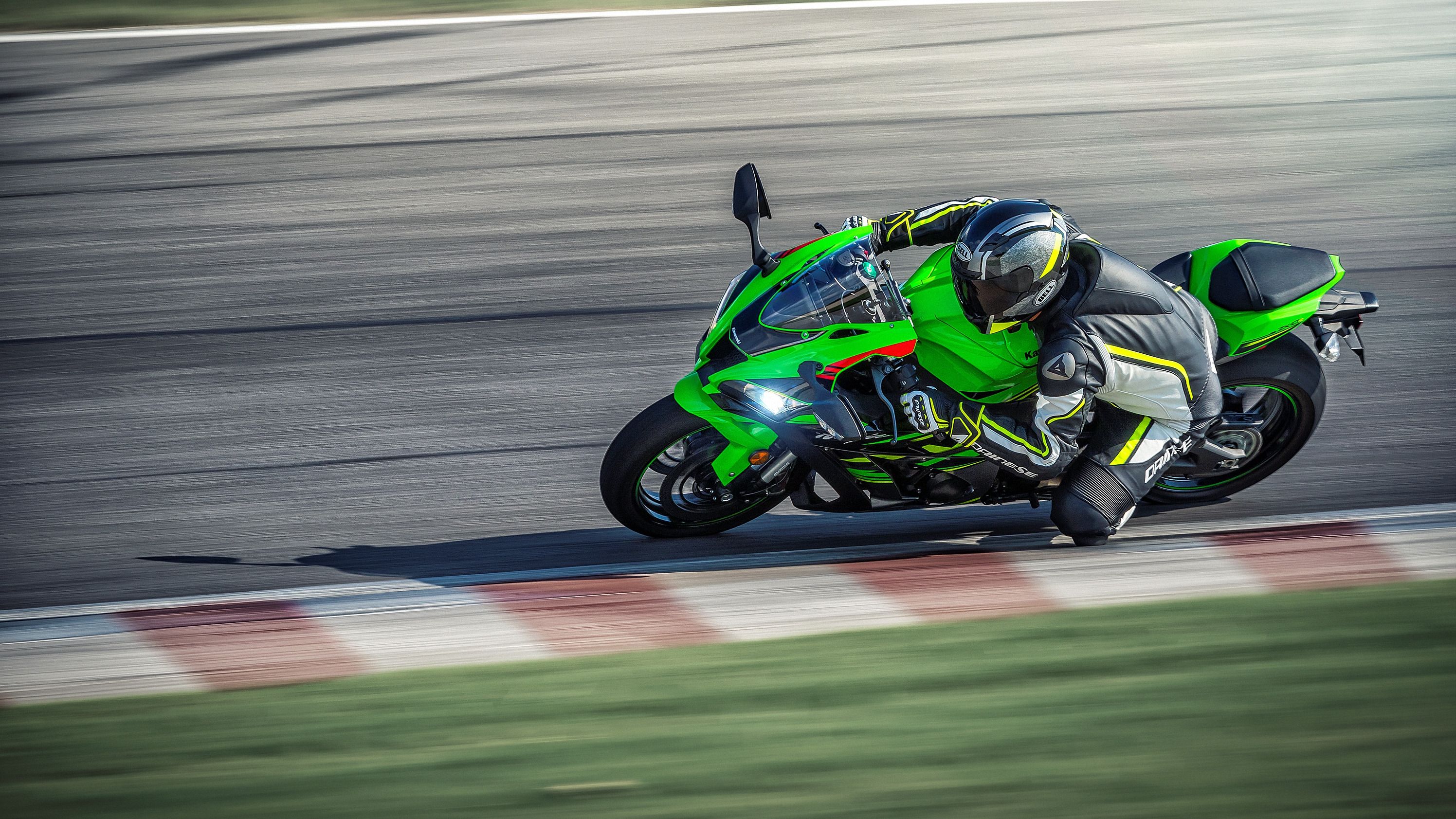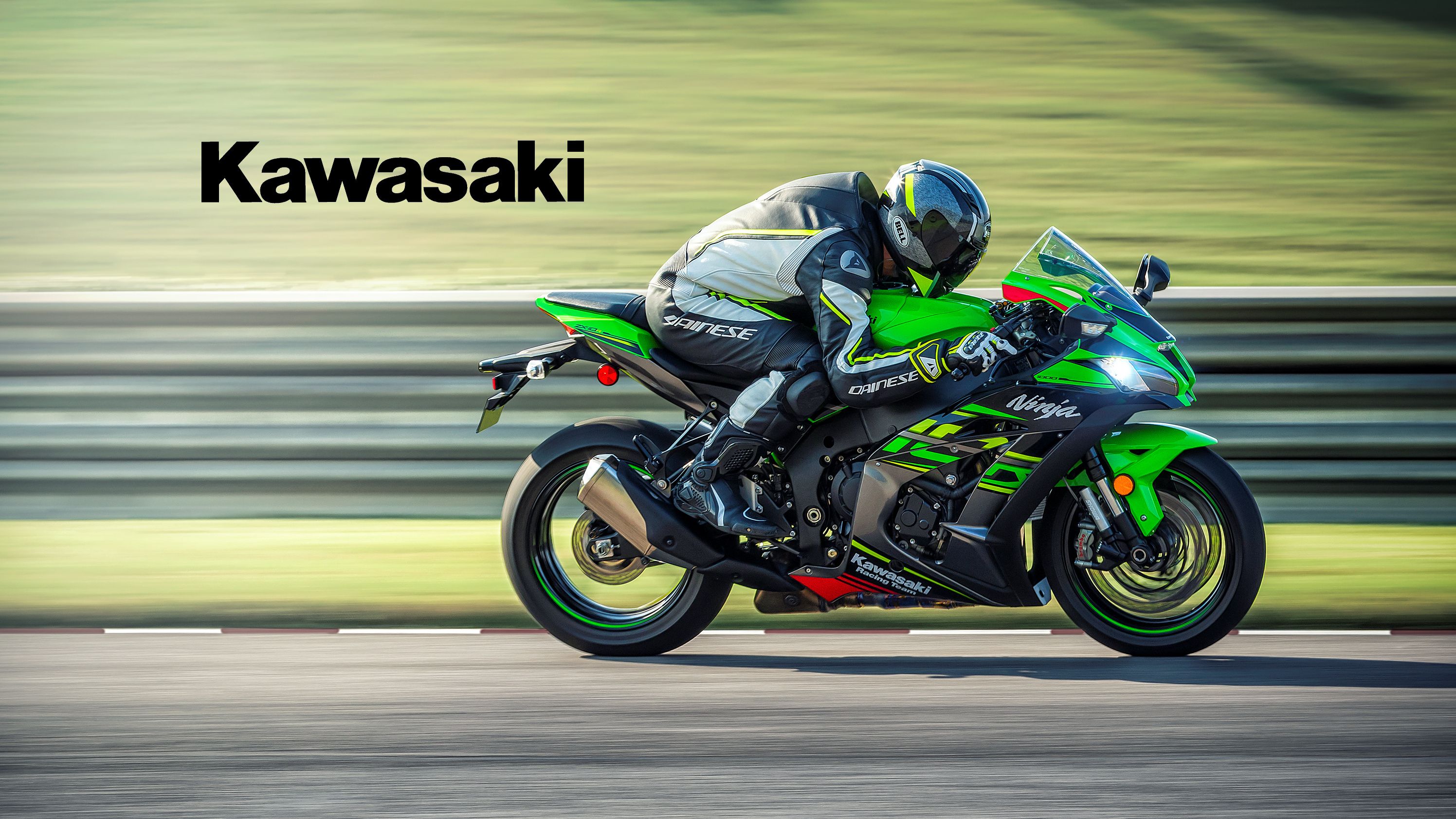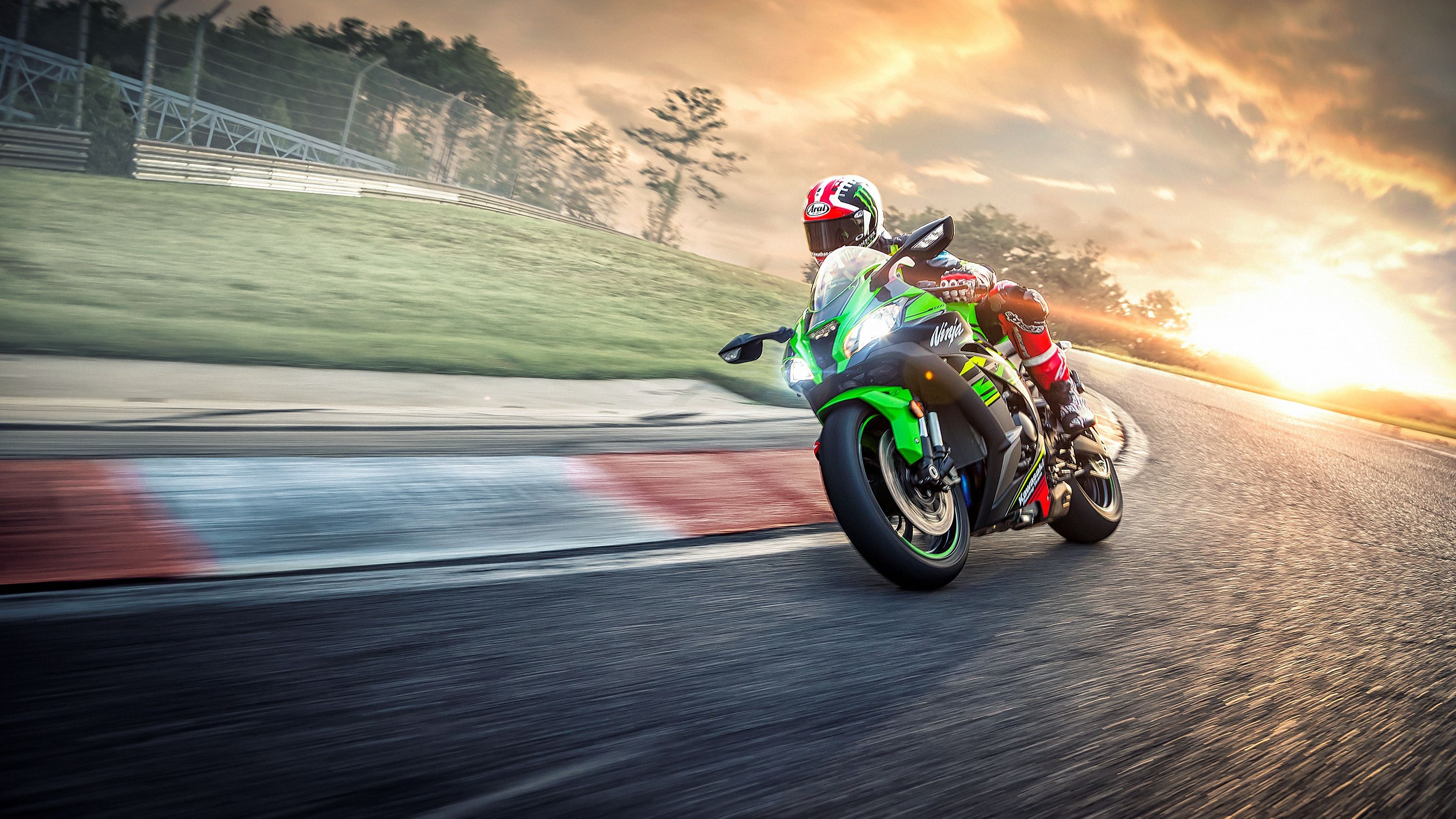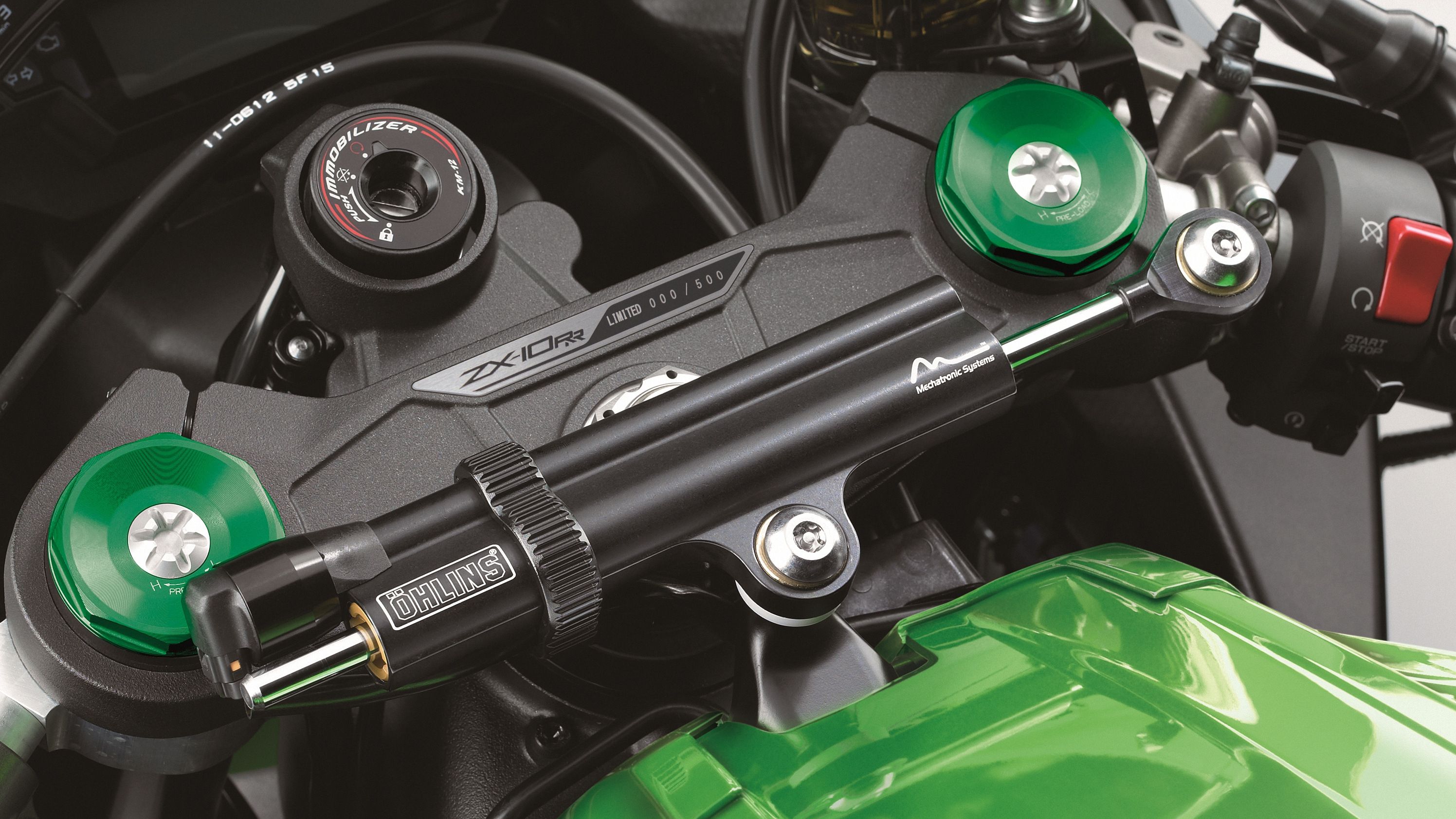Kawasaki's Ninja family has been a household name for over three decades now, and the factory aims to keep it that way with a couple of new-in-2019 models in the liter-bike range: the ZX-10R base model and its KRT variant. Toward that end, Kawi boosted power through a number of individual improvements in the engine. The engineers also added a few items that will certainly endear these siblings to the hearts of the race fans and wannabe knee-draggers out there and the electronics were upgraded with even more fandanglery on the menu.
2019 - 2020 Kawasaki Ninja ZX-10R
- Make: Array
- Model: 2019 - 2020 Kawasaki Ninja ZX-10R
- Engine/Motor: inline-4
- [do not use] Vehicle Model: Array
Kawasaki Ninja ZX-10R Design
The Ninja family has always served a dual purpose -- that of a race machine and a civilian vehicle -- and this new-in-'19 generation is no exception. The Ninja ZX-10R follows the superbike style that sees fairly complete coverage of the body and leaves a lot to the imagination. But it is purpose-built and windtunnel-tested, with little in the way of the superfluous, to provide low-resistance penetration with low-turbulence reintegration of the cooling air with the slipstream.
One of the more telling features is right at the leading edge of the front end; it's a ram-air port set right in the nose between the dual recessed headlights, and it is not just another vanity detail. It gulps air from the pressure wave at the entry and channels it directly into the airbox for a low-tech boost to volumetric efficiency with a concurrent increase in power.
Now don't get me wrong, I like the factory's thinking here, but I happen to know a thing or two about this subject, and the truth is that at legal interstate speeds, the power gain is negligible 'cause the ram-air pressure is just too low at that speed. Still, it's cool, and it speaks to the lengths to which the factory went to bring racebike tech to the unwashed masses.
Up top, a bubble screen punches a hole in the weather for the pilot to tuck into, and in another move to reduce drag, the front turn signals are integrated with the mirrors. Behind the glass is an all-electronic instrument panel that rocks a bar-type scale for the rpm with a digital LED screen and handful of idiot lights for the rest. Down low you'll find the usual maw created by the cowling with the radiator tucked away within, and that waste air reintegrates with the slipstream through the strategically located vents.
Dead-short control bars pull the rider forward over the 4.5-gallon fuel hump that drops precipitously to the narrow waist where tank, saddle, and body meet. An upswept subframe lofts the pillion and gives the “10R” a nose-down/tail-up attitude, and if you don't fancy hauling a passenger around, you can opt for the accessory seat cowl that conceals the pad with a cover that sports a tailbone bumper for the pilot.
Too bad Kawi went with a subframe-mount mudguard/turn signal/plateholder combo instead of a hugger, but I suspect that was a move to make it all easily removable for actual track use. Toward that end, the factory also offers a race kit for this machine just for that purpose.
Kawasaki Ninja ZX-10R Chassis
An aluminum, perimeter-style frame on the Ninja ZX-10R provides the structure and helps keep curb weight down to 454 pounds on the ABS version and 450 pounds on the vanilla model. The steering head sets a rake angle of 25 degrees from the vertical with 4.2 inches of trail that gives the chassis an agile nature to match its engine's performance profile.
Inverted, 43 mm balance-free forks float the front end with the full trinity of adjustments on board and 4.7 inches of travel at the axle. Out back, a balance-free, gas-charged shock adds high- and low-speed damping adjustments to go with the stepless rebound adjustment and spring preload for an actual four-pack of tweaks that'll give you plenty of opportunities to dial the ride in right where you want it.
Cast, three-spoke rims round out the rolling chassis and offer very little windage in crosswinds and contrary pressure waves in fast traffic, and that helps it track in spite of its compact 56.7-inch wheelbase. The hoops are symmetrical with a 120/70-17 up front and a 190/55-17 out back, and of course, they come with a ZR rating so they can take the stresses this machine is capable of generating, rider skill/bravery notwithstanding.
Now for the first bit of fandanglery; Kawi's proprietary Intelligent Brake System. The KIBS links the antilock-brake system to the engine control unit to provide brake protection that comes specifically tuned for superbike usage and offers minimal intrusion to allow you to search for the edge of the envelope in relative safety. As for the brakes themselves, Brembo supplies its Monobloc binders with a pair of four-piston calipers and dual, 330 mm discs up front, and a single-pot caliper and 220 mm disc out back.
|
Frame: |
Aluminum perimeter |
|
Front Suspension / Wheel Travel: |
43 mm inverted Balance Free Fork, adjustable stepless rebound and compression damping, spring preload adjustability/ 4.7 in |
|
Rear Suspension / Wheel Travel: |
Horizontal back-link with Balance Free gas-charged shock, stepless, dual-range (low-/high-speed) compression damping, stepless rebound damping, fully adjustable spring preload/ 4.5 in |
|
Rake/Trail: |
25.0°/4.2 in |
|
Front Tire: |
120/70 ZR17 |
|
Rear Tire: |
190/55 ZR17 |
|
Front Brakes: |
Kawasaki Intelligent anti-lock Brake System (KIBS), dual semi-floating 330 mm discs with dual radial mounted Brembo® monobloc 4-piston calipers |
|
Rear Brakes: |
KIBS-controlled, single 220 mm disc with aluminum single-piston caliper |
Kawasaki Ninja ZX-10R Drivetrain
Here's where the magic happens, and man, I ain't kidding. Let's go ahead and digest exactly what we're workin' with here. The factory claims an additional three ponies over last year for a total of 200 horsepower at the red line, and it is backed up by 84.6 pound-feet of torque that tops out at 11,500 rpm. Yikes, right?
Those revs come with extra safety and valve-float resistance due to the new finger-follower actuation that crossed over from the racing program, and for another bit of race-tastic wizardry, the head comes plug-n-play ready for cams with high-lift lobes with no special machine work necessary. That's good news for you aspiring racers out there, especially ones without a factory team and army of mechanics backing them up.
The mill itself is an inline four resting transversely in the chassis and rides with a forward cant that reduces the apparent length of the engine-transmission combo. That makes for a compact installation height-wise as well. Massively oversquare, the 76 mm bores and 55 mm stroke gives it a total displacement of 998 cc with a sizzlin' hot 13-to-1 compression ratio.
Liquid cooling draws off the waste heat from that high ratio with a large radiator that dominates the inner cowl scoop area. A quartet of 47 mm Mikuni throttle bodies use computer-controlled subthrottles to help bridge the gap between demand and capability, and send the juice to the combustion chamber through a pair of injectors per jug. Power flows through a six-speed gearbox before heading to the rear wheel via chain drive.
That's not the end of it though. Kawi blessed this bike with a host of electronic rider's aids that starts with a Launch Control to help you safely come out of the hole. The Kawasaki Sport Traction Control takes over from there to prevent your right wrist from overcoming the available traction and breaking the rear end loose. There's an Engine Brake Control to prevent the same thing from happening upon deceleration and a Cornering Management Function to keep you stable in the sweeps. Don't like to clutch every time you shift? Kawi's Quick Shifter (new-in-2019 on the 10R) sends you up and down the range sans clutch action for blistering-fast acceleration with no danger of missed shifts.
|
Engine: |
4-stroke, 4-cylinder, DOHC, 4-valve, liquid-cooled |
|
Displacement: |
998 cc |
|
Bore x Stroke: |
76.0 mm x 55.0mm |
|
Compression Ratio: |
13.0:1 |
|
Maximum Torque: |
84.6 lb-ft @ 11,500 rpm |
|
Fuel System: |
DFI® with 47mm Mikuni throttle bodies (4) with oval sub-throttles, two injectors per cylinder |
|
Ignition: |
TCBI with digital advance and Sport-Kawasaki Traction Control (S-KTRC) |
|
Transmission: |
6-speed, return shift |
|
Final Drive: |
Sealed chain |
Kawasaki Ninja ZX-10R Pricing
The 2020 Ninja ZX-10R rolls in Metallic Spark Black/Metallic Flat Spark Black with a $16,099 sticker, though the non-ABS version isn't available in our market this year. It's a $16,399 tag for the KRT variant with ABS or $15,399 without it. The KRT Edition has the Kawasaki Racing Team livery, that's Kawi Green over black with a few dashing splashes of red for a little accent
|
Electronic Rider Aids: |
Kawasaki Launch Control Mode (KLCM), Kawasaki Intelligent anti-lock Brake System (KIBS), Kawasaki Sport Traction Control (S-KTRC), Kawasaki Engine Brake Control, Kawasaki Quick Shifter (KQS) (dual direction), Kawasaki Cornering Management Function (KCMF) |
|
Warranty: |
12 Month Limited Warranty (with optional Kawasaki Protection Plus™ 12, 24, 36 or 48 months |
|
Color: |
|
|
└ 2019: |
Pearl Storm Gray/Metallic Flat Spark Black (KRT: Lime Green/Ebony/Metallic Graphite Gray) |
|
└ 2020: |
Metallic Spark Black/Metallic Flat Spark Black (KRT: Lime Green/Ebony) |
|
Price: |
|
|
└ 2019: |
non-ABS: $15,099, ABS: $16,099 (KRT: non-ABS: $15,399, ABS: $16,399) |
|
└ 2020: |
$16,099 (ABS only)(KRT: non-ABS: $15,399, ABS: $16,399) |
Kawasaki Ninja ZX-10R Competitors
The superbike game is one of inches at this point since the major players have all but perfected the liter displacement bracket. With that in mind, I drew my competitor from one of Kawasaki's domestic foes; Yamaha, and its YZF-R1 that seeks to bring track tech closer to the ground for the rest of us mere mortals.
Yamaha YZF-R1
Unsurprisingly, the overall shape is very similar, even down to the combination of angles and curves. Plus, the “R1” leads the way with a similar intake port in the front fairing to capitalize on that pressurized air to the benefit of the volumetric efficiency.
Yammy stuck the front turn signals in the mirrors as well, and I'm sure that helps when it comes time to strip down for trackdays. KYB floats the R1, front and rear, with the trinity of adjustments all around, and the brakes run with racing ABS and Yamaha's new-for-2020 Brake Control System for extra stability.
The Tuning Fork Company plugs its 998 cc CP4 engine into the frame with a six-speed tranny and a similar arrangement that helps minimize the vertical and longitudinal space needed to shoehorn the thing in there. Yamaha claims 200 ponies and 83.2 pounds o' grunt to fall just a hair shy of the Ninja's 200/84.6, so a match between these two machines will absolutely come down to rider skill a hair shy of the Ninja's 200/84.6, so a match between these two machines will absolutely come down to rider skill}}, as it should.
Yamaha let's go of the R1 for $17,399 for a slightly prouder checkout price versus the $16,099 sticker on the Ninja, but not so much that it would make a difference to someone price shopping. the $16,099 sticker on the Ninja, but not so much that it would make a difference to someone price shopping.}} As I already established; it's a game of inches once you get to the top.
Read our full review of the Yamaha YZF-R1.
He Said
“I'm glad nobody I love rides one of these. Even with all the electronic fandanglery, it still takes a considerable amount of skill to manage the energy this thing can produce, nevermind the fact that you'll never get all it has to offer on open public roads, not safely or legally anyway. That said, I can hear the pegdraggers lusting after this machine, and I don't mind admitting that I do not have the chops for one of these myself.”
not0}
My wife and fellow motorcycle writer, Allyn Hinton, says, “You know, these big liter bikes feel heavy when you first climb aboard, but honestly, they aren't built to stand still or go slow. I find it a bit of a struggle maneuvering a parking lot, but the bike is a bit tall for me, so take that as you will. Once you start moving, that weight disappears and the bike feels so light and infinitely flickable, like with no effort at all. With the 2019 update, the ZX-10R has increased power, with an even wider powerband, and believe me, if you have to tell people you have the skills to ride this baby in full-on mode, you don't people you have the skills to ride this baby in full-on mode, you don't}}, so keep it in low-power mode until you do or you'll end up killing someone.”
Kawasaki Ninja ZX-10R Specifications
|
Engine & Drivetrain: |
|
|
Engine: |
4-stroke, 4-cylinder, DOHC, 4-valve, liquid-cooled |
|
Displacement: |
998 cc |
|
Bore x Stroke: |
76.0 mm x 55.0mm |
|
Compression Ratio: |
13.0:1 |
|
Maximum Torque: |
84.6 lb-ft @ 11,500 rpm |
|
Fuel System: |
DFI® with 47mm Mikuni throttle bodies (4) with oval sub-throttles, two injectors per cylinder |
|
Ignition: |
TCBI with digital advance and Sport-Kawasaki Traction Control (S-KTRC) |
|
Transmission: |
6-speed, return shift |
|
Final Drive: |
Sealed chain |
|
Chassis: |
|
|
Frame: |
Aluminum perimeter |
|
Front Suspension / Wheel Travel: |
43 mm inverted Balance Free Fork, adjustable stepless rebound and compression damping, spring preload adjustability/ 4.7 in |
|
Rear Suspension / Wheel Travel: |
Horizontal back-link with Balance Free gas-charged shock, stepless, dual-range (low-/high-speed) compression damping, stepless rebound damping, fully adjustable spring preload/ 4.5 in |
|
Rake/Trail: |
25.0°/4.2 in |
|
Front Tire: |
120/70 ZR17 |
|
Rear Tire: |
190/55 ZR17 |
|
Front Brakes: |
Kawasaki Intelligent anti-lock Brake System (KIBS), dual semi-floating 330 mm discs with dual radial mounted Brembo® monobloc 4-piston calipers |
|
Rear Brakes: |
KIBS-controlled, single 220 mm disc with aluminum single-piston caliper |
|
Dimensions & Capacities: |
|
|
Overall Length: |
82.1 in |
|
Overall Width: |
29.1 in |
|
Overall Height: |
45.1 in |
|
Ground Clearance: |
5.7 in |
|
Seat Height: |
32.9 in |
|
Curb Weight: |
454.2 lb, non-ABS: 449.8 lb |
|
Fuel Capacity: |
4.5 gal |
|
Wheelbase: |
56.7 in |
|
Top Speed: |
180 mph (est) |
|
Details: |
|
|
Electronic Rider Aids: |
Kawasaki Launch Control Mode (KLCM), Kawasaki Intelligent anti-lock Brake System (KIBS), Kawasaki Sport Traction Control (S-KTRC), Kawasaki Engine Brake Control, Kawasaki Quick Shifter (KQS) (dual direction), Kawasaki Cornering Management Function (KCMF) |
|
Warranty: |
12 Month Limited Warranty (with optional Kawasaki Protection Plus™ 12, 24, 36 or 48 months |
|
Color: |
|
|
└ 2019: |
Pearl Storm Gray/Metallic Flat Spark Black (KRT: Lime Green/Ebony/Metallic Graphite Gray) |
|
└ 2020: |
Metallic Spark Black/Metallic Flat Spark Black (KRT: Lime Green/Ebony) |
|
Price: |
|
|
└ 2019: |
non-ABS: $15,099, ABS: $16,099 (KRT: non-ABS: $15,399, ABS: $16,399) |
|
└ 2020: |
$16,099 (ABS only)(KRT: non-ABS: $15,399, ABS: $16,399) |
Further Reading
Kawasaki
Read more Kawasaki news.

